Laser Treatment
Laser treatment is a cutting-edge approach in skin care, efficiently addressing a range of issues from acne scars to aging signs with targeted light beams.
This informative guide delves into how advanced laser technology targets and treats various skin imperfections, such as wrinkles, scars, and uneven skin tone. Discover how these precision treatments stimulate collagen production and skin renewal, offering a non-invasive solution to enhance skin appearance. Learn about the different types of lasers and their applications in dermatology, providing you with insights into one of the most innovative skincare technologies available today.
ipl laser treatment
Intense Pulsed Light (IPL) therapy, commonly known as IPL laser treatment, is a versatile and non-invasive solution used to improve the appearance of the skin. Unlike traditional lasers that use a single wavelength of light, IPL utilizes a broad spectrum to target various skin concerns effectively. This treatment is ideal for addressing issues such as sun damage, age spots, freckles, rosacea, and even unwanted hair.
IPL treatment works by emitting bursts of intense light that penetrate the skin without causing damage to the surface. When the light is absorbed by pigments in the skin like melanin or blood vessels, it converts to heat. This heat then destroys the target cells while leaving the surrounding skin unharmed. The result is clearer, more youthful-looking skin.
One of the primary benefits of IPL treatment is its ability to handle multiple skin conditions simultaneously. For individuals suffering from both pigmentation and redness, IPL can provide a comprehensive solution that minimizes the need for multiple types of treatments. It’s particularly effective for those with fair to medium skin tones and can be tailored to suit specific skin types and concerns by adjusting the light’s intensity.
The procedure itself is quick and usually takes about 20 to 30 minutes, making it a convenient option for people with busy schedules. During the treatment, patients may experience a mild stinging sensation—often compared to the snap of a rubber band against the skin—but it is generally well-tolerated. Most people require a series of treatments, typically spaced about a month apart, to achieve optimal results.

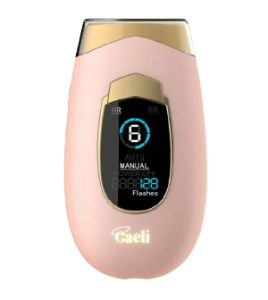
Post-treatment, it’s common to see a slight redness or swelling, which typically subsides within a few hours to a day. The skin may appear brighter almost immediately, with more significant improvements visible after several treatments. Since IPL doesn’t significantly damage the skin surface, recovery time is minimal, allowing individuals to return to their daily activities with no downtime.
For those considering IPL laser treatment, it’s crucial to consult with a qualified dermatologist or a cosmetic skin care specialist who can assess your skin type and concerns. They can also provide a treatment plan tailored to your specific needs. It’s important to follow post-treatment care instructions, such as avoiding sun exposure and using sunscreen regularly to protect the treated areas and enhance the longevity of the results.
IPL laser treatment offers a promising solution for those looking to improve their skin’s appearance effectively and with minimal inconvenience. With its ability to target multiple skin issues and its relatively quick and easy procedure, IPL stands out as a popular choice in the realm of cosmetic skin treatments.
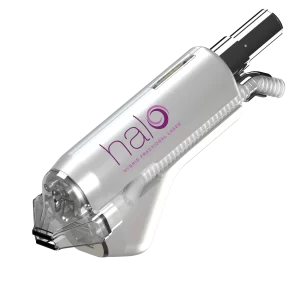
Following the treatment, the skin will begin to peel slightly within 24 to 72 hours as new, healthier skin emerges. Results can be seen as soon as the initial redness subsides, with improvements continuing to develop over the following months. To protect and maintain the new skin, patients are advised to avoid direct sunlight and apply sunscreen diligently.
Halo offers a unique advantage by providing noticeable results with significantly less downtime than other resurfacing lasers. It’s ideal for individuals looking for a solution that bridges the gap between mild non-ablative treatments and more intensive resurfacing procedures. Halo is particularly effective for those who wish to tackle the visible signs of aging and achieve a refreshed, youthful look without a prolonged recovery period.
For anyone considering Halo Laser Treatment, it’s essential to consult with a certified professional who specializes in laser therapies. They can provide a personalized assessment and ensure that the treatment is tailored to your skin type and cosmetic goals. With Halo, you can achieve dramatic improvements in skin quality and enjoy a renewed complexion with minimal interruption to your daily life.
Halo laser treatment
Halo Laser Treatment is a state-of-the-art skin rejuvenation procedure that combines two types of lasers to achieve outstanding results with minimal downtime. This hybrid technology targets both the epidermis and deeper dermal layers, making it an excellent choice for addressing a wide range of skin issues, including wrinkles, discoloration, scarring, and enlarged pores.
The Halo system uses a combination of ablative and non-ablative lasers. The ablative laser creates tiny channels in the skin, which remove the outer layer of dead and damaged skin cells. Simultaneously, the non-ablative laser penetrates deeper into the skin without removing any layers, heating up the underlying tissue to stimulate collagen production. This dual action allows for effective treatment of surface blemishes and promotes long-term skin health by enhancing its underlying structure.
What sets Halo apart is its precision and adjustability. The treatment can be customized to the specific needs of each patient, allowing practitioners to dial in the exact depth and coverage required. This customization makes Halo particularly effective for not only improving skin texture and tone but also for achieving a more luminous and vibrant skin appearance.
The procedure typically lasts about 30 to 45 minutes, depending on the area being treated. Patients often report feeling a sensation of heat with occasional prickling, but cooling measures and topical anesthetics are generally used to maximize comfort during the treatment. The recovery from Halo is quicker than traditional ablative lasers, with most patients experiencing only a few days of redness and mild swelling.

Moxi laser treatment
Moxi Laser Treatment is a gentle yet effective laser therapy designed to refresh and rejuvenate the skin with minimal downtime. This treatment is particularly well-suited for those just beginning their skin maintenance routine, individuals with minor skin issues, or anyone looking to improve their complexion without the intensive recovery often associated with more aggressive laser treatments.
The Moxi laser is a non-ablative laser, which means it heats up the skin without removing any layers. It targets the dermis to stimulate collagen production, improving skin elasticity and reducing the appearance of fine lines and wrinkles. It also helps to even out skin tone, reducing the visibility of sun damage, age spots, and other forms of hyperpigmentation. The Moxi laser’s wavelength is ideal for treating all skin types, including those that may not be suitable for more intensive laser treatments.
A typical Moxi treatment session lasts between 15 to 30 minutes, depending on the area treated. During the procedure, patients often experience a warm sensation as the laser works, which is generally well-tolerated. The device is designed with comfort in mind, featuring integrated cooling technology that helps soothe the skin during treatment.


Recovery from Moxi Laser Treatment is straightforward, with most patients experiencing only mild redness and some swelling for a day or two post-treatment. Unlike more abrasive laser therapies, there is no peeling or significant downtime required. This makes Moxi an excellent option for busy individuals seeking a quick, effective method to enhance their skin’s appearance without disrupting their daily activities.
The results of Moxi Laser Treatment can be seen shortly after the sessions, with improvements continuing as the skin heals and rejuvenates itself over the next few weeks. For optimal results, a series of treatments is typically recommended, especially for those looking to address more pronounced skin concerns or achieve more dramatic anti-aging effects.
Patients are advised to follow a gentle skincare routine post-treatment and avoid direct sunlight. Using broad-spectrum sunscreen is crucial to protect the new skin and maintain the results of the treatment.
Moxi Laser Treatment is an excellent choice for anyone seeking a low-maintenance solution to enhance their skin’s natural beauty while addressing early signs of aging and mild pigmentation issues. It offers a balance of efficacy and convenience, providing noticeable improvements with minimal impact on daily life.

Following the session, patients can expect to return to their daily activities immediately, as there is no downtime associated with BBL. The treated skin may appear slightly red and swollen, akin to a mild sunburn, but these effects usually subside within a few hours. To protect and enhance the treatment results, patients are advised to avoid direct sun exposure and apply sunscreen consistently.
The benefits of BBL are not only immediate but also cumulative. With each treatment, the light energy continues to improve skin clarity and resilience by stimulating collagen production. For optimal results, patients may undergo multiple sessions, spaced a few weeks apart. Over time, the skin appears more radiant, with fewer imperfections and an overall rejuvenated look.
BBL is particularly effective for patients with light to medium skin tones and those concerned with visible signs of aging or sun damage. A consultation with a skilled dermatologist or cosmetic practitioner is essential to assess whether BBL is the appropriate treatment option, as they can provide personalized advice based on individual skin type and cosmetic objectives.
In conclusion, BBL Laser Treatment offers a non-invasive solution to enhance skin appearance, reduce signs of aging, and achieve a healthier, more vibrant complexion. Its ability to target specific skin issues while promoting long-term skin health makes it a popular choice for those seeking effective cosmetic improvements.
BBL laser treatment
BroadBand Light (BBL) therapy is a cutting-edge treatment option that harnesses the power of high-intensity light to treat a variety of skin conditions and promote a youthful appearance. Unlike traditional lasers, BBL uses intense pulsed light (IPL) technology, which emits a broad spectrum of light to target and treat different skin issues effectively. This versatile method is especially beneficial for addressing age spots, sun damage, rosacea, and other signs of aging.
BBL’s technology allows it to deliver light energy precisely to the areas of concern, whether it’s pigmented lesions or vascular conditions. The light energy is absorbed by the target areas, leading to either the breakdown of pigment or the closure of unwanted vascular lesions. This process promotes a clearer, more even skin tone and texture.
One of the standout features of BBL treatment is its customizability. Practitioners can adjust the wavelength of the light to cater to various skin types and concerns, making BBL a suitable choice for a broad range of patients. This adaptability ensures that each session can be tailored to meet the specific needs of the individual, whether they are looking to diminish fine lines, reduce redness, or improve overall skin firmness.
A typical BBL session lasts between 20 to 30 minutes, depending on the area being treated. The procedure begins with the application of a cooling gel to the treatment area to minimize discomfort. Both the patient and the practitioner wear protective eyewear to shield their eyes from the intense light. During the treatment, patients may experience a warm sensation as the light passes over the skin, often compared to the snap of a rubber band. However, this is generally well-tolerated.

Co2 laser treatment
CO2 Laser Treatment is renowned for its effectiveness in treating more pronounced skin issues, such as deeper wrinkles, scars, and significant sun damage. This treatment involves the use of a carbon dioxide laser to deliver short pulses of very high-intensity light. Unlike other laser treatments that might only superficially treat the skin, CO2 lasers can penetrate deeper skin layers to achieve more dramatic and long-lasting results.
The CO2 laser precisely removes outer layers of damaged skin to reveal the softer, smoother, and younger skin underneath. This process, known as ablative resurfacing, stimulates the skin’s natural healing process, prompting the increased production of collagen and new skin cells. Collagen is vital for maintaining youthful and elastic skin, and its increased production helps to naturally fill in wrinkles and fine lines.
The procedure for CO2 Laser Treatment can vary in length but typically lasts between 30 minutes to two hours, depending on the size and number of areas being treated. Due to the intensity of this treatment, patients may require local anesthesia or sedatives to manage comfort. After the procedure, the skin will appear red and may feel sunburned or sensitive for several days. Swelling is also common but should diminish within a week or two.
Recovery from CO2 Laser Treatment requires more downtime compared to less invasive laser treatments. Patients might need to take a week off from work and other daily activities. During this period, it’s crucial to follow post-treatment care instructions closely, which include keeping the skin clean, moisturized, and protected from sunlight. Proper aftercare is vital for preventing infection and ensuring optimal healing.
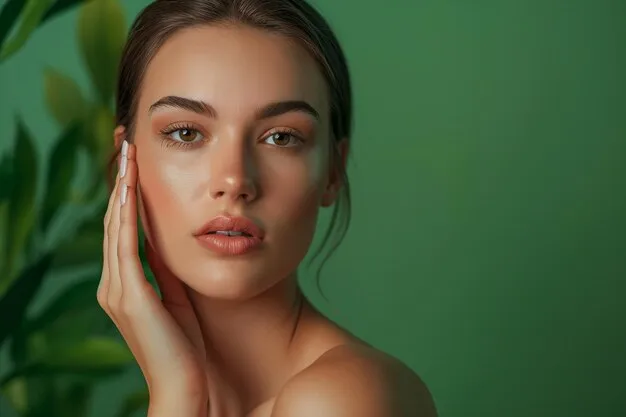
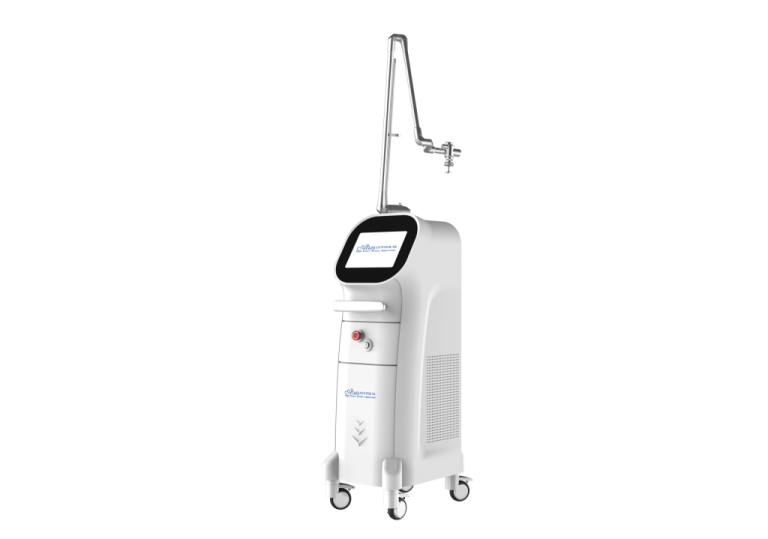
The results of CO2 Laser Treatment can be quite transformative. After the initial healing period, patients will notice a significant improvement in skin texture and firmness. The effects are long-lasting, often persisting for several years, provided that the skin is cared for properly, including protection from the sun.
Despite its benefits, CO2 Laser Treatment is not suitable for everyone. It is best performed on individuals with lighter skin tones due to the risk of pigmentation changes following the treatment. Patients considering this procedure should consult with a dermatologist or a cosmetic surgeon who is experienced in performing laser treatments. They can assess skin type, discuss potential risks, and determine if CO2 laser treatment is the best approach for achieving desired skin rejuvenation goals.
In conclusion, CO2 Laser Treatment is a powerful solution for those looking to address significant cosmetic concerns. Its ability to deeply resurface the skin makes it an excellent option for dramatically improving skin appearance and texture. With proper care and protection, the results of this treatment can rejuvenate the skin and significantly enhance one’s complexion.

Post-treatment care is minimal, mainly involving basic foot hygiene and keeping the feet dry to prevent a recurrence of the fungus. Since the laser only targets the fungus and does not affect the surrounding tissues or nail growth, the nail is left intact and will continue to grow healthy and clear as long as the fungus is effectively eliminated and reinfection is prevented.
The effectiveness of laser treatment for toenail fungus can vary, with many patients seeing improvement after just one session. However, complete eradication might require multiple treatments, and results can take several months to become visible as the nail grows out. It’s important for patients to have realistic expectations and follow their practitioner’s advice closely to achieve the best outcomes.
Consultation with a qualified healthcare provider, such as a dermatologist or podiatrist, is essential to determine whether laser treatment is appropriate for your specific case of toenail fungus. They will consider factors like the severity of the fungus, previous treatments, and overall health to ensure the most effective treatment plan.
In conclusion, laser treatment for toenail fungus is an innovative and efficient method to tackle a persistent issue that many find difficult to resolve with traditional methods. Its non-invasive nature, coupled with the convenience of no recovery time and minimal side effects, makes it a compelling option for those seeking a definitive solution to their fungal nail infections.
Laser treatment for toenail fungus
Laser treatment for toenail fungus offers a modern solution to a common problem that affects millions of people worldwide. Toenail fungus, medically known as onychomycosis, is typically characterized by the thickening, yellowing, and crumbling of the nail. Traditional treatments like oral medications and topical creams can be less effective and have potential side effects, making laser treatment a viable and attractive alternative.
The procedure involves using a laser to emit a focused beam of light that passes through the nail and targets the fungus underneath without damaging the nail or the surrounding skin. This light essentially heats and destroys the fungal organisms that are responsible for the infection. Lasers can target the fungus directly, making this treatment particularly effective because it reaches the fungi nestled under the nail, an area often unreachable with creams or oral medications.
Laser treatment for toenail fungus is quick and painless, typically requiring only about 30 minutes per session. Most patients report little to no discomfort during the procedure, often describing a slight warming sensation or a small pinch. Depending on the severity of the infection and the specific type of laser used, several sessions may be required to fully eradicate the fungus.
One of the significant advantages of laser treatment is that there is no downtime. Patients can resume their daily activities immediately after the procedure without any restrictions. This treatment is also safe, with no systemic side effects associated with oral medications, which can be a concern for people with certain medical conditions or those taking multiple medications.

Laser treatment for acne scars
Laser treatment for acne scars is a highly effective method for reducing the appearance of scars and improving skin texture. Acne scars, which can range from deep pits to scars that are angular or wavelike in appearance, are often a significant concern for those who have experienced severe acne. Various laser technologies offer targeted treatments that promote skin renewal by focusing on the damaged areas and stimulating the body’s natural healing processes.
The primary mechanism behind laser treatment for acne scars involves the use of concentrated light to remove or diminish the damaged skin layers. This process encourages the growth of new, healthy skin cells and boosts collagen production, which is crucial for giving the skin its elasticity and strength. There are primarily two types of laser treatments used for acne scars: ablative and non-ablative lasers.
Ablative lasers are more intense, removing layers of the skin and essentially resurfacing it. This type of laser treatment is particularly effective for deeper, more pronounced scars. It vaporizes the scar, allowing smoother, more uniform skin to take its place. Although ablative laser treatments offer dramatic results, they do require some downtime for healing, which can range from a few days to several weeks, depending on the intensity of the treatment and the individual’s skin type.
Non-ablative lasers, on the other hand, do not remove any skin layers; instead, they stimulate collagen production and healthy skin cell growth beneath the surface. This approach is less invasive than ablative lasers and typically involves minimal downtime, making it a suitable option for those who cannot take extended time off for recovery. Non-ablative lasers are generally better for milder acne scars and skin textures.
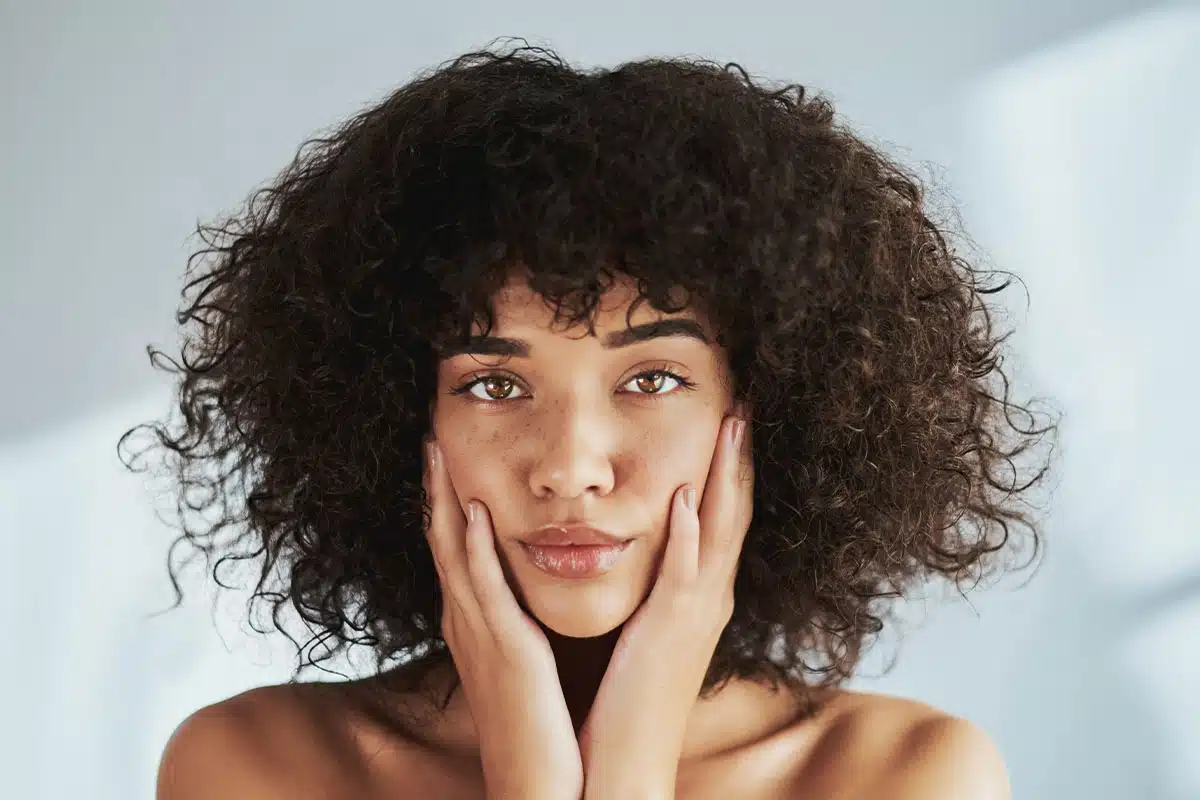
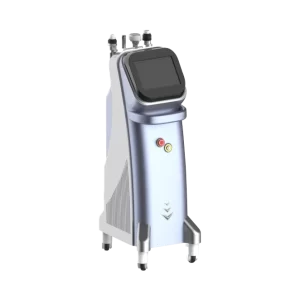
The procedure itself is usually quick, with most sessions lasting between 30 minutes to an hour. Patients may experience some discomfort during the treatment, akin to the sensation of a rubber band snapping against the skin. To minimize pain, topical anesthetics are often applied prior to the session.
Following laser treatment, it’s common for the skin to appear red and swollen for a few days. Depending on the type of laser used, some peeling or flaking of the skin may also occur as the old, scarred skin gives way to new skin. It is crucial to follow post-procedure care instructions, which include keeping the skin clean, moisturized, and protected from the sun.
The number of treatments required can vary widely based on the severity of the scars and the type of laser used. Some people may see significant improvement after just one treatment, while others might need multiple sessions. A consultation with a dermatologist or cosmetic surgeon who specializes in laser treatments is essential to determine the most appropriate type of laser and number of sessions needed.
Laser treatment for acne scars is a compelling option for many who wish to reduce the visibility of their acne scars and improve the overall appearance of their skin. By promoting skin regeneration and collagen production, laser therapy can lead to smoother, healthier skin, ultimately enhancing the patient’s confidence and skin quality.

The procedure for laser scar treatment is generally quick, usually lasting between 30 minutes to an hour per session. The number of sessions needed depends on the scar’s size, depth, and age. It is common for patients to undergo multiple treatments spaced several weeks apart to achieve the best results.
Patients may experience mild discomfort during the procedure—often described as a snapping sensation against the skin. Cooling methods and topical anesthetics are commonly used to reduce pain and make the process more comfortable. Post-treatment, the treated area may be red and swollen for a few days, and it is crucial to follow a care regimen that includes keeping the skin clean and protected from the sun.
Proper aftercare following laser treatment is vital to ensure effective healing and optimal results. This includes using recommended skin care products to keep the area moisturized and using sunscreen to protect the new skin from UV damage.
The effectiveness of laser treatment in improving the appearance of surgical scars has made it a widely accepted and sought-after procedure. It is essential for individuals considering this treatment to consult with a dermatologist or a specialist in cosmetic and laser therapies to assess their condition and determine the most suitable treatment plan.
In conclusion, laser treatment for surgical scars can significantly enhance the skin’s appearance by reducing the visibility of scars, smoothing the skin’s texture, and promoting the growth of new, healthy skin cells. With advances in laser technology, many people can expect substantial improvements in their skin’s appearance, leading to increased confidence and satisfaction with their skin.
Laser treatment for surgical scars
Laser treatment for surgical scars is a popular method for improving the appearance of scars left by surgeries. These scars can be unsightly, causing discomfort and self-consciousness for many individuals. Lasers provide a non-invasive solution to reduce the visibility of these scars by targeting and remodeling the scar tissue and promoting the regeneration of healthy skin.
The process involves using focused light beams to penetrate the skin, which can selectively remove or dissolve the scar tissue depending on the type of laser used. This treatment encourages the production of collagen and elastin, key components that help improve skin texture and elasticity. There are two main types of laser treatments used for surgical scars: ablative and non-ablative lasers.
Ablative lasers work by vaporizing the top layers of the scarred skin, making them particularly effective for treating more pronounced and raised scars. This type of laser strips away damaged tissue and triggers the body’s natural healing process, resulting in the growth of smoother and more uniform skin. While ablative laser treatments offer noticeable results, they require a longer recovery time, as the skin needs to heal from the removal of its layers.
Non-ablative lasers, in contrast, target the underlying skin layers without harming the surface. These lasers heat up the deeper layers, stimulating collagen production without damaging the outer skin. Non-ablative treatments are less invasive than ablative treatments and typically have minimal downtime, making them a preferred choice for patients with less severe scarring or those who cannot afford a long recovery period.

Fraxel laser treatment
Fraxel laser treatment is a revolutionary cosmetic procedure that uses fractional laser technology to address a variety of skin issues, including fine lines, wrinkles, scarring, sun damage, and uneven pigmentation. This treatment works by targeting a fraction of the skin at a time, creating micro-damage that stimulates the body’s natural healing process, leading to rejuvenation and renewal of the skin cells.
Fraxel lasers operate by emitting thousands of microscopic laser columns into the skin, which penetrate deep into the dermis without affecting the surrounding tissue. These laser columns create tiny wounds within the targeted areas, initiating the body’s natural healing process. As the skin repairs itself, it increases collagen and elastin production—two proteins crucial for maintaining skin’s youthful firmness and elasticity. The process effectively remodels the skin from the inside out, improving texture and clarity.
The beauty of Fraxel laser treatment lies in its precision and effectiveness. It can be tailored to different skin types and concerns, allowing for customized treatment plans. The intensity of the laser can be adjusted based on the specific skin condition being treated and the desired results, making it suitable for a wide range of patients.
A typical Fraxel treatment session lasts about 20 to 30 minutes, depending on the area being treated. Prior to the procedure, a topical anesthetic is applied to the treatment area to minimize discomfort. During the session, patients might feel a mild burning sensation, but this is generally well-tolerated due to the numbing cream.
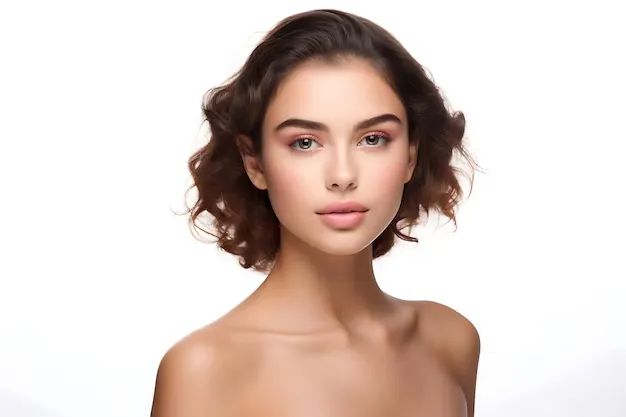
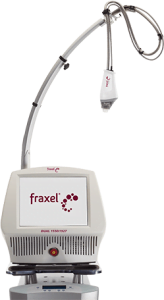
Post-treatment, the skin will appear red and swollen, similar to a sunburn. This can last anywhere from a few days to a week, depending on the intensity of the treatment and the individual’s skin response. Some patients may also experience flaking as the old skin peels away, revealing fresher, new skin underneath.
Recovery time varies by patient and the specific Fraxel setting used. Patients are advised to avoid direct sun exposure and to use high-SPF sunscreen to protect the new skin. Proper aftercare, including gentle washing and moisturizing, is crucial to support the healing process and optimize the results.
Fraxel laser treatments typically require multiple sessions, spaced several weeks apart, to achieve the best results. The number of treatments necessary depends on the initial condition of the skin and the patient’s cosmetic goals. Over the course of treatments, patients will notice a gradual improvement in their skin’s appearance, with results becoming more pronounced after each session.
The outcomes from Fraxel laser treatment can be significant, particularly for those dealing with textural issues or premature aging. Patients report not only smoother, firmer skin but also a reduction in the appearance of unwanted pigmentation and scars. This makes Fraxel a popular choice for those seeking to improve their complexion without invasive surgery.
Overall, Fraxel laser treatment offers a potent solution for rejuvenating the skin and addressing specific dermatological issues. By leveraging the body’s own healing mechanisms, it provides lasting improvements to the skin’s appearance, texture, and overall health, making it a favored option among those looking to restore their skin’s natural beauty.

One of the key advantages of laser treatment for rosacea is its precision and efficacy. By targeting only the affected blood vessels, the surrounding skin remains unharmed. This results in a high safety profile and minimal downtime, making it an attractive option for many patients seeking relief from rosacea symptoms.
Typically, multiple sessions are required to achieve optimal results. The exact number of treatments varies depending on the individual’s response to the laser and the severity of their symptoms. Maintenance sessions may also be necessary to manage the condition long-term, as rosacea can be chronic and recurrent.
The effectiveness of laser treatment in reducing rosacea symptoms has been well-documented, with many patients experiencing a significant reduction in redness and a clearer complexion. It’s important to consult with a dermatologist who specializes in laser treatments to determine the most appropriate type of laser and treatment plan based on the specific type of rosacea and skin type.
In conclusion, laser treatment offers a promising solution for those struggling with rosacea, providing a way to manage and mitigate symptoms that can improve skin appearance and boost confidence. With advances in laser technology, this type of treatment continues to improve, offering rosacea sufferers a valuable tool in their skincare arsenal.
Laser treatment for rosacea
Laser treatment for rosacea is a highly effective method for managing and reducing the symptoms of this common skin condition, which typically manifests as redness, visible blood vessels, and sometimes acne-like bumps on the face. Rosacea can be a source of significant discomfort and self-consciousness, and while it cannot be cured, laser treatment can significantly alleviate its appearance and associated symptoms.
The principle behind laser treatment for rosacea involves the use of specific wavelengths of light to target and reduce the blood vessels responsible for the redness. Different types of lasers may be used depending on the severity and characteristics of the rosacea. Pulsed dye lasers (PDL) and intense pulsed light (IPL) devices are among the most common choices. These technologies are designed to specifically target red pigment in the skin, causing the blood vessels to heat up and disintegrate, thereby reducing redness and flushing.
The treatment process typically involves a series of sessions, each lasting between 15 to 30 minutes. During the procedure, a handheld device is passed over the affected areas, emitting bursts of light that feel like a rubber band snapping against the skin. Most patients find the discomfort manageable, and cooling gels or local anesthesia can be used to minimize pain.
Immediately after the treatment, there may be some swelling and redness, which usually subsides within a few hours to a couple of days. Cooling packs and anti-inflammatory creams can help reduce these temporary side effects. It’s crucial for patients to avoid sun exposure and to use a broad-spectrum sunscreen with a high SPF to protect the treated areas and prevent further aggravation of rosacea symptoms.

Laser treatment for dark spots
Dark spots, or hyperpigmentation, are a common skin concern that can affect people of all ages and skin types. These spots often result from various factors, including sun exposure, hormonal changes, aging, and post-inflammatory responses from acne or injuries. For many, these spots can be a source of frustration and self-consciousness. Fortunately, advancements in dermatology have led to effective treatments, with laser therapy being one of the most popular and successful options available.
Laser treatment for dark spots works by targeting the melanin in the skin, which is responsible for pigmentation. The laser emits light energy that is absorbed by the pigmented cells, breaking them down so the body can naturally eliminate them. This process not only helps to fade existing dark spots but also encourages the production of new, healthy skin cells, leading to a more even and radiant complexion.
There are various types of lasers used for treating dark spots, each with its own unique mechanism and benefits. Some of the most commonly used lasers include Q-switched lasers, which are highly effective for deeper pigmentation, and fractional lasers, which are great for addressing surface-level discoloration while also promoting collagen production. Intense Pulsed Light (IPL) therapy is another popular option that uses broad-spectrum light to treat a variety of pigmentation issues with minimal downtime.
One of the significant advantages of laser treatment is its precision. Lasers can target specific areas of pigmentation without affecting the surrounding skin, making the treatment both safe and effective. This precision also means that fewer sessions are often needed compared to other treatment methods, such as chemical peels or microdermabrasion. However, the number of sessions required can vary depending on the severity of the pigmentation and the type of laser used.
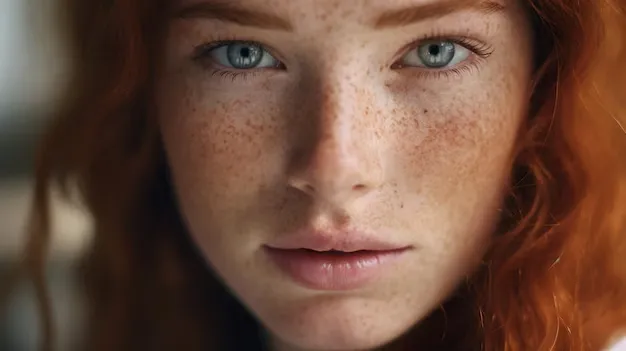

Before undergoing laser treatment, it is essential to have a consultation with a qualified dermatologist. The dermatologist will assess your skin type, the extent of your dark spots, and any underlying causes to determine the most appropriate treatment plan. They will also provide guidance on how to prepare for the procedure, which typically includes avoiding sun exposure and discontinuing the use of certain skincare products that may increase sensitivity.
During the laser treatment, you may feel a slight stinging sensation as the laser pulses target the dark spots. However, this discomfort is generally minimal and well-tolerated. After the procedure, it is common to experience some redness and swelling in the treated area, but these side effects usually subside within a few days. As the skin heals, the dark spots will gradually fade, revealing a more even and luminous complexion.
Post-treatment care is crucial to achieving optimal results and preventing the recurrence of dark spots. It is important to follow your dermatologist’s instructions, which typically include applying a soothing moisturizer, avoiding direct sun exposure, and using a broad-spectrum sunscreen daily. Sun protection is particularly important, as UV rays can exacerbate pigmentation and undo the benefits of the treatment.

Each laser treatment session typically lasts between 15 to 60 minutes, depending on the area being treated and the specific laser technology used. During the procedure, patients may experience a mild discomfort, often described as a sensation similar to the snap of a rubber band against the skin. Topical anesthetics or cooling devices are commonly used to minimize discomfort during treatment.
Post-treatment care is crucial for achieving the best results and preventing complications. Patients may experience redness, swelling, and sensitivity to sunlight immediately following the procedure. Proper skincare, including the use of moisturizers and broad-spectrum sunscreens, is essential to protect the treated areas and support the healing process.
The number of treatments required can vary widely based on the individual’s skin condition and the desired outcomes. Some patients may see significant improvements after just one session, while others might need multiple treatments to achieve their goals.
Consulting with a dermatologist or a certified skin care professional is essential to determine the most suitable type of skin laser treatment. A specialist can provide a thorough assessment of the skin’s condition and recommend a personalized treatment plan tailored to the individual’s specific needs and expectations.
In conclusion, skin laser treatments offer a powerful solution for enhancing skin appearance, reducing signs of aging, and correcting various skin imperfections. With ongoing advancements in laser technology, these treatments continue to evolve, providing safer, faster, and more effective results for individuals looking to improve their skin health and confidence.
Skin laser treatment
Skin laser treatment is a broad and versatile category of cosmetic procedures designed to address a wide range of skin issues, from signs of aging and sun damage to acne scars and uneven pigmentation. By using highly focused beams of light, skin laser treatments can effectively target specific layers of the skin, promoting rejuvenation and correction at a cellular level. This process helps to enhance the skin’s overall texture, tone, and appearance.
There are various types of skin laser treatments available, each tailored to different skin concerns and goals. The most common types include ablative lasers, non-ablative lasers, and fractional lasers:
Ablative Lasers: These lasers work by vaporizing the outer layers of the skin, which prompts the skin to heal and regenerate new cells. Ablative lasers are highly effective for treating deeper wrinkles, more significant sun damage, and pronounced scars. However, they involve some downtime for the skin to heal properly.
Non-Ablative Lasers: Unlike ablative treatments, non-ablative lasers do not remove any skin layers. Instead, they heat up the underlying skin tissue without damaging the surface. This process stimulates collagen production and new skin cell growth, improving skin texture and firmness. Non-ablative lasers are less invasive and typically require little to no downtime, making them a popular choice for patients seeking a less intense treatment option.
Fractional Lasers: Combining elements of both ablative and non-ablative technologies, fractional lasers target only a fraction of the skin at a time, leaving the surrounding tissue intact. This allows for faster healing and reduced recovery time compared to fully ablative lasers. Fractional lasers are particularly effective for treating acne scars, fine lines, and sun spots.

Pico laser treatment
Pico laser treatment is a cutting-edge skin rejuvenation technology favored for its precision and minimal downtime. This type of laser therapy uses ultra-short picosecond laser pulses to target skin imperfections at a microscopic level. The Pico laser’s rapid pulse rate allows it to deliver energy in trillionths of a second, making it one of the fastest and most effective laser treatments available today. It is particularly effective for treating pigmentation issues such as freckles, sun spots, and melasma, as well as for removing tattoos and improving skin texture.
The principle behind Pico laser treatment is photomechanical, rather than photothermal. Unlike other lasers that rely on heat to stimulate skin repair and rejuvenation, the Pico laser uses high-energy pulses to create intense, but very tiny, shockwaves that shatter unwanted pigment or ink particles without burning the surrounding tissue. This process minimizes thermal damage, thus reducing the risk of side effects and shortening recovery time.
Pico laser’s effectiveness extends beyond pigment and tattoo removal. It’s also highly effective for skin rejuvenation and collagen production. The treatment stimulates the natural healing processes of the skin, encouraging the production of collagen and elastin. This results in a smoother, firmer, and more youthful skin appearance, making it a great choice for addressing acne scars and fine lines.
A typical Pico laser session lasts about 10 to 30 minutes, depending on the area being treated and the specific condition addressed. Patients often describe the sensation during the procedure as similar to the snap of a thin rubber band against the skin. While mildly uncomfortable, the procedure is generally well-tolerated, and cooling measures or topical anesthetics can be used to enhance comfort.
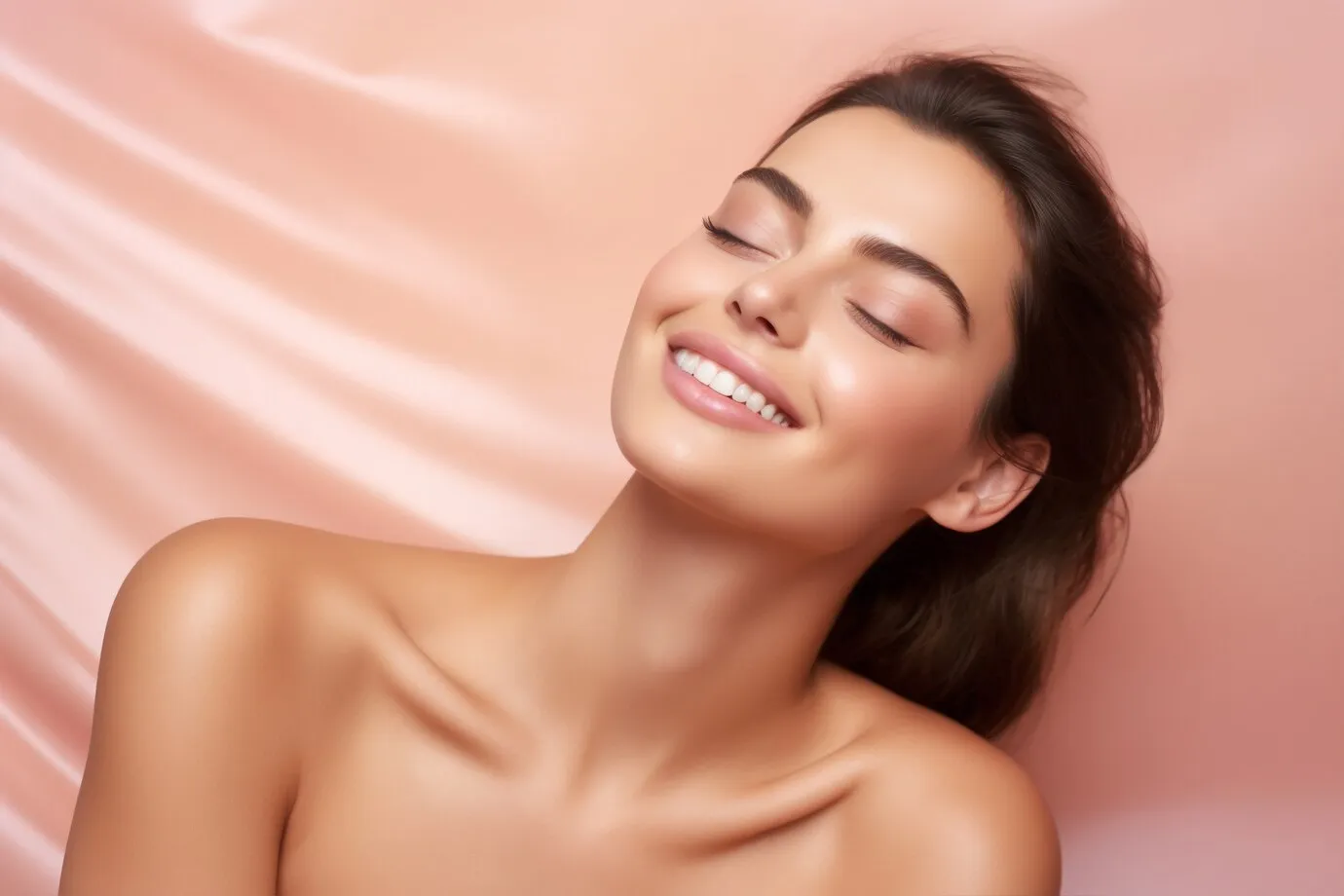

One of the significant advantages of Pico laser treatment is its quick recovery time. Patients typically experience minimal redness and swelling, which usually subsides within a few hours after the procedure. There is no significant downtime, allowing patients to return to their daily activities immediately, albeit with sun protection. Proper aftercare includes the use of broad-spectrum sunscreen and gentle skin care products to help maintain the results and protect the skin.
Depending on the issue being treated, several sessions may be necessary to achieve the desired results. The number of treatments varies based on the severity of the skin concern, the area treated, and individual responses to the laser. For instance, tattoo removal requires more sessions than pigment reduction.
Consultation with a dermatologist or a laser treatment specialist is crucial to determine whether Pico laser therapy is the best approach for a patient’s specific skin concerns. This initial assessment helps tailor the treatment plan to individual needs, ensuring optimal outcomes and satisfaction.
In conclusion, Pico laser treatment represents a modern, efficient, and effective approach to skin rejuvenation and correction of various skin imperfections. Its rapid pulse technology not only provides precise results but does so with minimal risk and downtime, making it an appealing choice for those seeking significant improvements in skin health and appearance.

During a facial laser treatment, the skin is first cleansed, and a topical anesthetic may be applied to reduce discomfort. The procedure itself can last anywhere from a few minutes to an hour, depending on the size of the area being treated and the type of laser used. Patients may feel a sensation similar to a rubber band snapping against the skin during the session, but this is generally well-tolerated.
Post-treatment care is crucial for achieving the best results and minimizing potential side effects. Patients may experience redness, swelling, and sensitivity to sunlight immediately following the procedure. These effects typically subside within a few days to a week. It is important to follow the dermatologist’s instructions on skincare post-treatment, which often includes using gentle cleansers, moisturizers, and strict sun protection.
The number of sessions needed can vary based on the laser type, the condition being treated, and the individual’s skin response. Some patients might see significant improvement after just one treatment, while others may require multiple sessions to achieve their desired results.
Facial laser treatment offers a promising solution for those seeking to enhance their skin appearance significantly. With a range of technologies tailored to different skin needs, these treatments provide substantial improvements in skin health and cosmetic appearance, boosting both the skin’s condition and the patient’s confidence.
Facial laser treatment
Facial laser treatment is a versatile and effective cosmetic procedure that targets a wide array of skin concerns, from aging signs and sun damage to acne scars and uneven skin tone. By using laser technology to deliver concentrated light pulses to the skin, this treatment encourages rejuvenation and healing, resulting in a smoother, clearer, and more youthful complexion.
The technology behind facial laser treatments varies according to the specific issues being addressed and the desired outcomes. Here are a few common types of lasers used in facial treatments:
Ablative Lasers: These lasers, such as CO2 and Erbium YAG, remove the outer layers of aged or damaged skin by vaporizing them. Ablative laser treatments are highly effective for reducing deeper wrinkles, scars, and more significant skin irregularities. However, they involve some recovery time, as they are more intensive.
Non-Ablative Lasers: These lasers work beneath the surface skin layer to stimulate collagen growth and promote new skin cell development without removing any skin. Treatments like Fraxel fall into this category and are popular for their ability to enhance skin texture and tone with minimal downtime.
Fractional Lasers: Combining the techniques of ablative and non-ablative lasers, fractional lasers target a fraction of the skin at a time, creating microthermal treatment zones. This method reduces recovery time while still improving the appearance of aging signs, sun damage, and other skin issues.
Intense Pulsed Light (IPL): Although not a laser, IPL is often grouped with laser treatments because it uses similar light-based technology to treat pigmentation, redness, and flushing associated with conditions like rosacea. IPL is highly effective for creating a more balanced skin tone and reducing the appearance of dark spots.
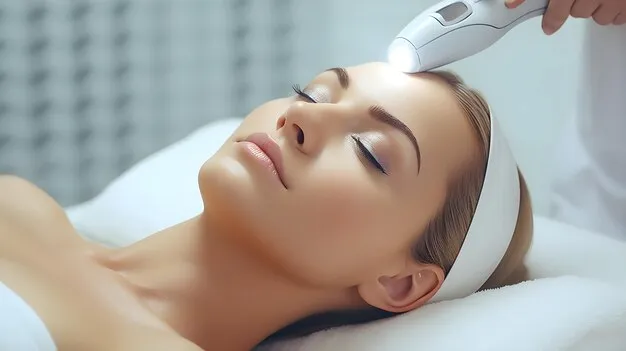
Acne laser treatment
Acne laser treatment is a sophisticated procedure aimed at tackling persistent acne, reducing active breakouts, and lessening the visibility of acne scars. This method uses specific wavelengths of light to penetrate the skin, targeting both the surface and deeper layers to disrupt the cycle of acne formation.
Lasers such as ND: YAG and pulsed dye are commonly utilized in acne treatment. ND: YAG lasers dive deep to moderate oil production within sebaceous glands and destroy acne-causing bacteria, addressing the root causes of acne without harming the skin’s surface. Pulsed dye lasers focus on reducing inflammation and redness, aiding in the healing of active acne lesions and improving the appearance of scars by stimulating collagen production.
The treatment process is relatively quick, usually lasting between 15 to 30 minutes per session. Patients often describe the sensation as a rubber band snapping against the skin, which can be alleviated with topical anesthetics or cooling methods used during the procedure. While some patients may experience immediate improvements, optimal results typically require multiple treatments over several weeks or months, depending on the severity of the acne and the patient’s skin type.
Recovery from acne laser treatment is usually swift, with minor side effects such as redness and swelling that subside within a few days. There is minimal downtime, making it an attractive option for individuals seeking an effective treatment without significant disruption to their daily activities. However, strict sun protection is crucial following treatment to protect the skin and preserve the results.


Acne laser treatment is particularly effective for inflammatory acne, such as papules and pustules, and less so for non-inflammatory blemishes like blackheads and whiteheads. It’s also beneficial for reducing the appearance of acne scars, offering a smoother skin texture as a result. The treatment’s efficacy varies based on individual skin conditions and must be tailored to each patient by a skilled dermatologist or cosmetic skin specialist.
This treatment offers a promising alternative for those who have struggled with traditional acne therapies, including topical treatments and oral medications, which can sometimes lead to undesirable side effects. Laser treatment can be a more direct, faster method to clear skin, enhancing both appearance and confidence.
Patients considering acne laser treatment should consult with a dermatologist to assess whether this treatment is suitable for their skin type and acne condition. A professional will provide a tailored approach, ensuring the safety and effectiveness of the treatment while minimizing potential risks. This method is not only about improving skin appearance but also about enhancing the overall quality of life for those affected by severe acne.
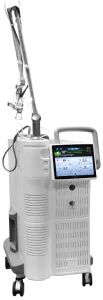
Post-treatment care is straightforward but crucial for achieving the best results and minimizing potential side effects. Patients may notice redness and swelling in the treated areas, which typically subside within a few days. It’s essential to keep the skin moisturized and to avoid direct sun exposure following the treatment. Using a high-SPF sunscreen is recommended when going outdoors to protect the healing skin from UV damage.
While laser treatment can significantly improve the appearance of stretch marks, it may not completely remove them. The effectiveness of the treatment varies depending on the age and color of the stretch marks, as well as the patient’s skin type. Newer, reddish stretch marks typically respond better to laser treatment than older, silver-colored marks.
Consultation with a dermatologist or cosmetic skin specialist is essential before undergoing laser treatment for stretch marks. A professional can assess the specific characteristics of the stretch marks, discuss potential outcomes, and determine the most appropriate type of laser treatment. They can also help set realistic expectations, as results can vary widely among individuals.
In conclusion, laser treatment offers a promising solution for reducing the appearance of stretch marks, enhancing skin texture, and boosting confidence. With advances in laser technology, more people are turning to this non-invasive method as a way to effectively address stretch marks and achieve smoother skin.
Laser treatment for stretch marks
Laser treatment for stretch marks is an increasingly popular method that utilizes advanced laser technology to reduce the appearance of stretch marks and enhance the skin’s overall texture. Stretch marks, also known as striae, are a common skin condition that occurs when the skin is stretched rapidly due to growth spurts, pregnancy, weight gain, or muscle growth, leading to tears in the dermis. These marks often start as red, purple, or dark lines and gradually fade to a lighter color over time. Laser therapy targets these marks to promote healing and skin rejuvenation.
The process involves using fractional lasers, which are especially effective for treating stretch marks. These lasers deliver intense light beams in a fractional pattern to the affected areas, creating micro-wounds. This triggers the body’s natural healing process, stimulating the production of new collagen and elastin fibers in the dermis. As the skin heals, the texture and color of stretch marks improve, making them less noticeable.
Laser treatment for stretch marks generally requires multiple sessions, depending on the severity and age of the stretch marks. Each session typically lasts about 30 minutes, with the number of sessions varying based on individual needs. The treatment is relatively quick and does not involve incisions or extended downtime, making it a convenient option for those with busy schedules.
During the treatment, patients may experience a sensation similar to the snapping of a rubber band against the skin, along with some heat. Most modern laser systems are equipped with cooling mechanisms to minimize discomfort during the procedure. Topical numbing creams can also be applied to reduce pain.
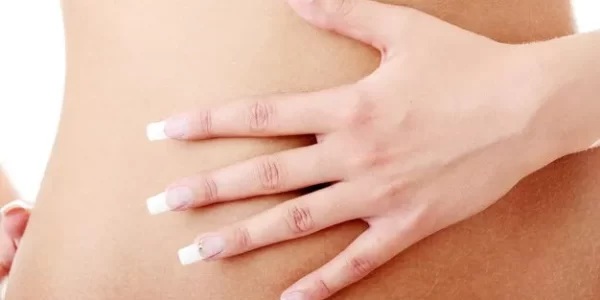
Laser treatment for brown spots
Laser treatment for brown spots is a sophisticated and effective method to reduce hyperpigmentation, such as age spots, sun spots, and other forms of melanin-rich patches on the skin. These spots, which can become more prominent with age and increased sun exposure, can be effectively diminished using targeted laser technologies.
The procedure utilizes lasers like the Q-switched laser, which is favored for its ability to deliver short, intense pulses of light. These pulses specifically target the pigmented areas, breaking up the melanin deposits without harming the surrounding skin. Intense Pulsed Light (IPL) therapy, though not a laser, works similarly by targeting discoloration with light energy.
During a typical session, which may last from 30 to 45 minutes, patients might experience a sensation similar to a rubber band snapping against the skin. This is generally mild and manageable. Cooling mechanisms or topical anesthetics can be applied to minimize discomfort. The process is quick, allowing for a return to daily activities almost immediately, though there may be some mild redness or swelling initially.
After the treatment, the targeted brown spots typically darken before they begin to fade. This fading occurs as the skin naturally sheds the damaged pigment over one to two weeks, revealing clearer and more even-toned skin. Depending on the depth and extent of the pigmentation, multiple sessions spaced several weeks apart may be necessary to achieve the best results.
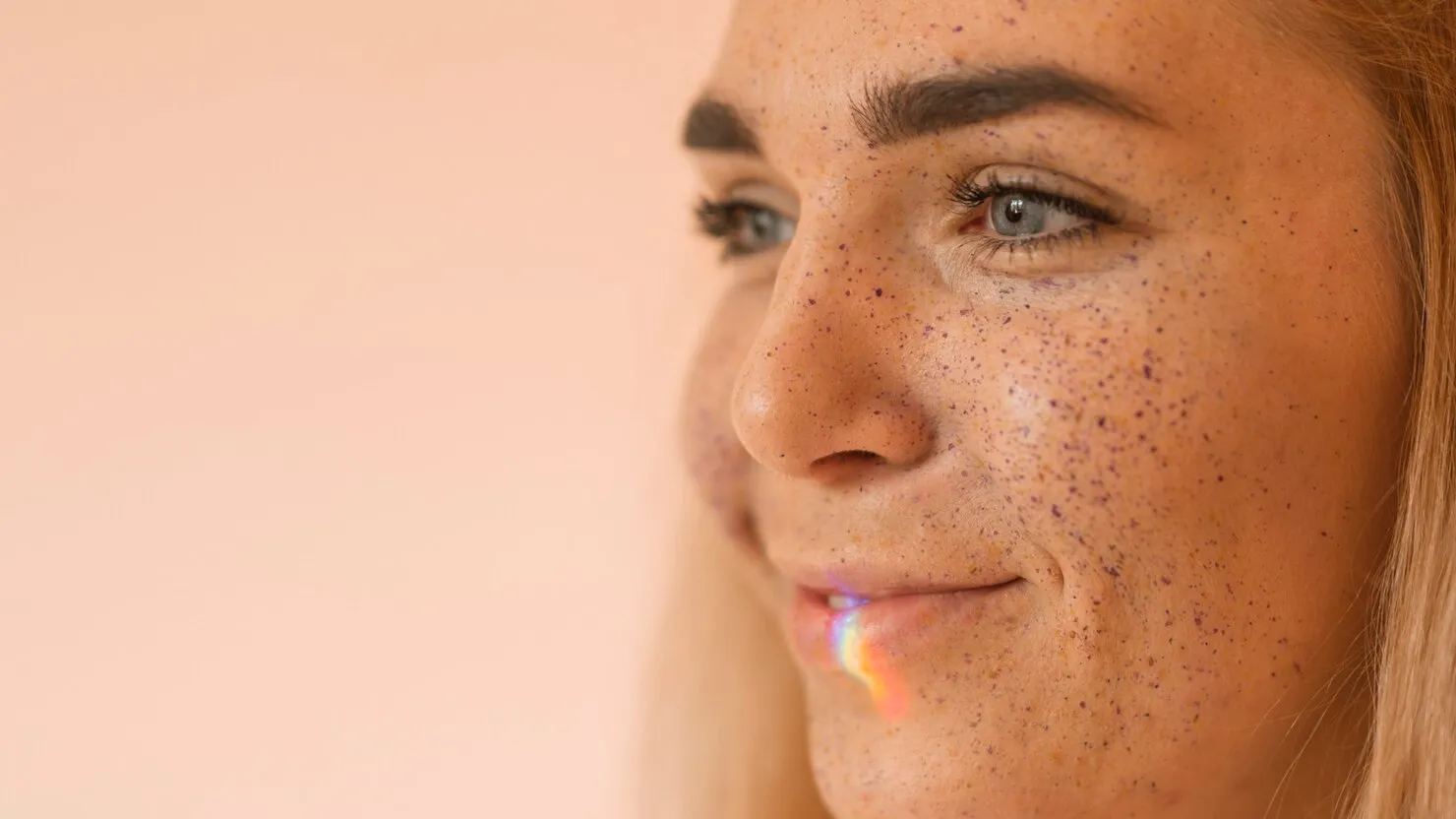

The effectiveness of this treatment varies based on the type and severity of the brown spots and the individual’s skin type. Most patients observe significant improvements after one or two treatments, with spots becoming lighter or disappearing altogether. However, the outcome can differ, and some spots may require additional sessions.
Post-treatment care is crucial and includes stringent sun protection to prevent the formation of new hyperpigmentation. Patients are advised to use a broad-spectrum sunscreen and limit sun exposure to maintain the results of the treatment and prevent new spots from forming.
It’s essential for anyone considering this treatment to consult with a dermatologist or a specialist in laser treatments to assess whether this method is appropriate for their specific type of brown spots and skin condition. This professional guidance helps ensure the safety and effectiveness of the treatment while minimizing potential risks.
Overall, laser treatment for brown spots offers a promising solution for those seeking to enhance their complexion by reducing skin discolorations. With careful handling and appropriate care, it can lead to significant improvements in skin appearance, boosting confidence and contributing to a more youthful look.
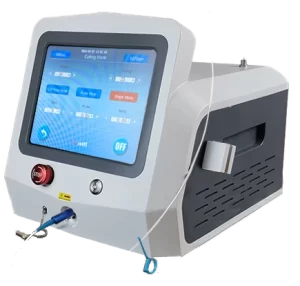
Post-treatment, it is common to experience mild redness or swelling for a few days. These symptoms are typically mild and resolve on their own without the need for medication. The improvements in vaginal tightness, moisture, and incontinence generally begin to appear after the first few weeks, with continuing improvements over the following months as the collagen remodeling process progresses.
The effectiveness of vaginal laser treatment has been affirmed by various studies, showing significant improvements in vaginal health, particularly in post-menopausal women and those who have undergone childbirth. It has also been noted for its benefits in enhancing the quality of life by addressing both physical and psychological symptoms associated with vaginal atrophy and other related conditions.
Women considering vaginal laser treatment should consult with a gynecologist or a specialist trained in the procedure to discuss their symptoms and determine if they are suitable candidates. It’s important to have a thorough understanding of the potential benefits and risks associated with the treatment.
In summary, vaginal laser treatment offers a promising option for women looking to alleviate symptoms related to vaginal health issues. It provides a non-invasive alternative to traditional surgical methods, with minimal downtime and a quick return to daily activities. By improving structural integrity and function, this innovative treatment can significantly enhance comfort and quality of life.
Vaginal laser treatment
Vaginal laser treatment is a non-surgical procedure designed to improve various symptoms associated with vaginal health issues, particularly those stemming from menopause, childbirth, or hormonal changes. This treatment focuses on rejuvenating vaginal tissue, enhancing moisture levels, and improving overall structural integrity. The procedure uses laser energy to stimulate collagen production, which can help in tightening the vaginal walls and addressing issues such as urinary incontinence and vaginal dryness.
The technology behind vaginal laser treatment typically involves fractional CO2 lasers or erbium YAG lasers. These lasers create tiny micro-lesions in the vaginal wall, which trigger the body’s natural healing response. This response stimulates the production of new collagen and elastin, leading to firmer and more youthful vaginal tissue. The treatment also improves blood circulation, which can enhance sensitivity and overall sexual satisfaction.
A typical vaginal laser treatment session lasts about 30 minutes, and most women report feeling only minor discomfort during the procedure. The sensation is often described as a slight vibration or warmth. Generally, the procedure is performed without the need for anesthesia, and patients can resume their normal daily activities immediately afterward, although they may be advised to avoid sexual activity for a short period to allow the treated area to heal.
The number of sessions required varies depending on the individual’s specific conditions and the severity of their symptoms. Most women achieve optimal results with a series of two to three treatments spaced about a month apart. Maintenance sessions might be recommended yearly to sustain the benefits of the treatment.

Pulsed dye laser treatment
Pulsed dye laser (PDL) treatment is a highly effective dermatological procedure used to treat a variety of skin conditions by targeting blood vessels directly without damaging surrounding tissues. This laser technology is particularly renowned for its ability to improve or eliminate skin issues characterized by redness or vascular abnormalities, such as port-wine stains, hemangiomas, rosacea, and some types of acne scars. It also effectively treats other conditions like stretch marks, warts, and psoriasis.
The PDL operates by emitting a concentrated beam of light at a wavelength of 585 to 595 nanometers, which is optimally absorbed by the oxyhemoglobin in the blood. When this light energy is absorbed by the blood vessels or vascular lesions, it heats them up, causing the vessel walls to collapse and subsequently be absorbed by the body. This process reduces the appearance of the targeted lesions without significant damage to the overlying or surrounding skin.
A typical PDL treatment session is relatively quick, often lasting only a few minutes to half an hour, depending on the size and number of areas being treated. The sensation during the procedure is often described as a series of quick, sharp snaps—similar to the snapping of a rubber band against the skin. A cooling spray is usually applied in tandem with the laser pulses to minimize discomfort and protect the skin from heat damage.
Most patients can resume their normal activities immediately after treatment, although the treated area may appear red and swollen for a few days. This post-treatment redness usually subsides within a few hours to days, and cooling packs can be used to reduce swelling. The treated area should also be protected from sun exposure to prevent changes in pigmentation, and a broad-spectrum sunscreen should be applied regularly.
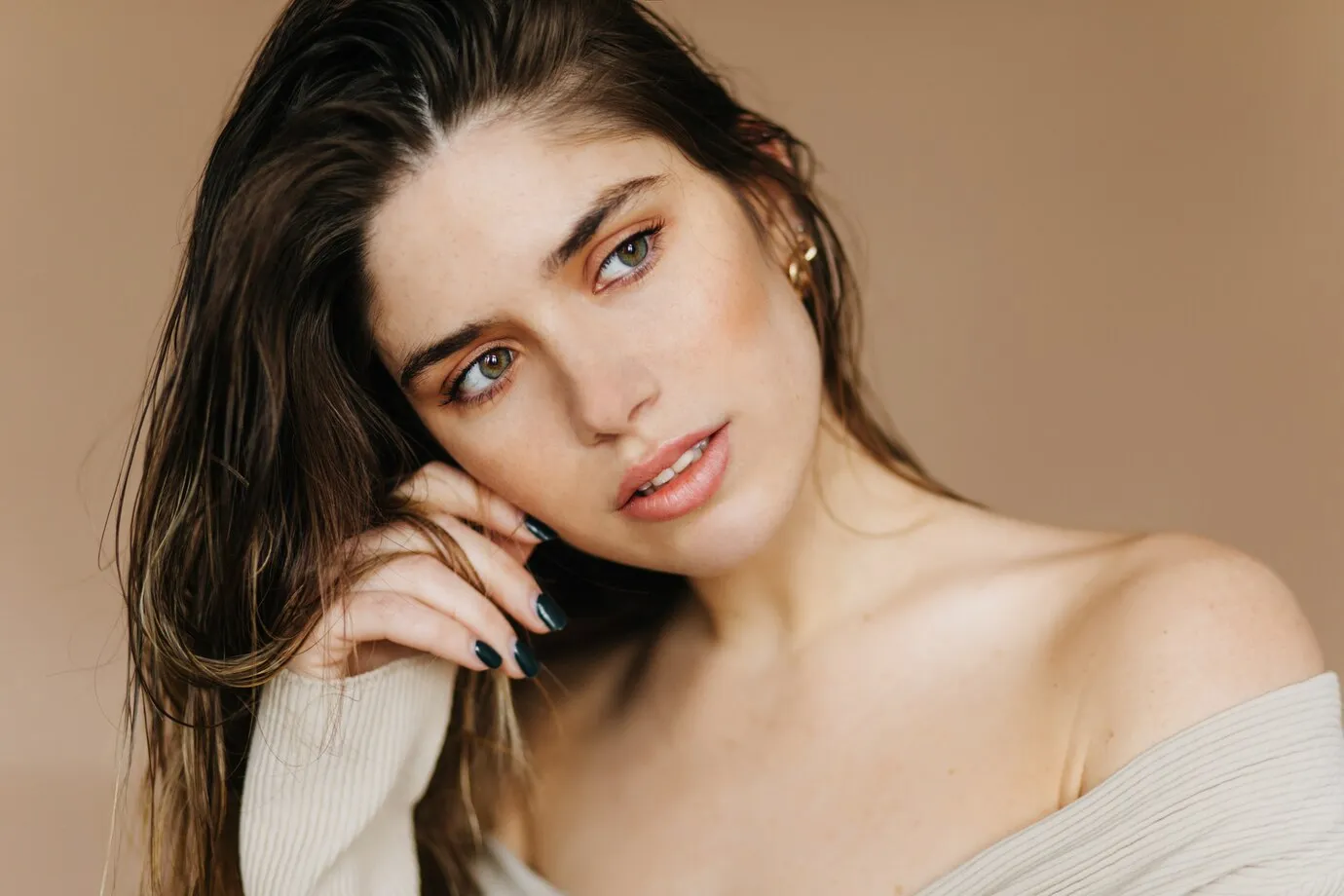
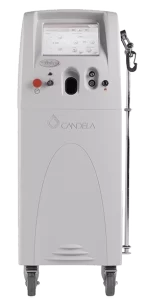
The number of treatments necessary varies based on the condition being treated and the patient’s response to the laser. Some conditions, like small red birthmarks, may resolve after one to three treatments, while others, like extensive port-wine stains, may require multiple sessions to achieve optimal results. Treatments are typically spaced several weeks apart to allow the skin to heal completely between sessions.
The effectiveness of PDL treatment has been well-documented, with many patients experiencing substantial improvement in the appearance of treated lesions. For conditions like rosacea, PDL can significantly reduce redness and flushing, while for port-wine stains, it can lighten the lesion, making it less visible.
Patients considering pulsed dye laser treatment should consult with a dermatologist or a cosmetic skin specialist who is experienced with the laser. A thorough evaluation is necessary to determine if PDL is the most appropriate treatment option, based on the specific type and severity of the skin condition. This consultation will also provide an opportunity to discuss expectations, potential side effects, and the overall treatment plan.
In summary, pulsed dye laser treatment is a safe, effective, and minimally invasive option for addressing a variety of vascular skin conditions. With its precision and quick recovery time, PDL offers patients a means of improving skin appearance with minimal discomfort and downtime.
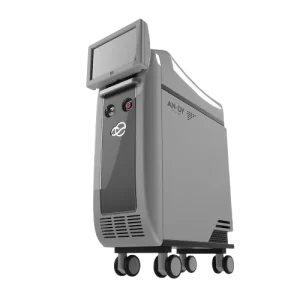
Skin Rejuvenation: YAG lasers stimulate collagen production in the skin, yielding improved texture, tone, and firmness. They are instrumental in addressing concerns like fine lines, wrinkles, and acne scars, contributing to overall skin rejuvenation.
YAG laser procedures are typically conducted in clinical settings by trained professionals. Sessions vary in duration depending on the area being treated and the specific condition targeted. Patients may experience mild discomfort during the procedure, often described as a warm snapping sensation, which is generally well-tolerated.
Recovery from YAG laser treatment differs based on the application. For hair removal and skin rejuvenation, patients may experience transient redness and swelling, typically resolving within a few hours to days. Tattoo removal may involve blistering and crusting, followed by gradual fading of the tattoo over subsequent weeks.
While generally safe and effective, YAG laser treatment requires careful consideration and consultation to assess candidacy and discuss potential risks and benefits. Proper aftercare, including sun protection and skincare, is essential to optimize results and minimize complications.
In conclusion, YAG laser treatment stands as a versatile and innovative solution for various dermatological and cosmetic concerns. Its precision, effectiveness, and minimal downtime make it a cornerstone of modern medical and aesthetic practices, offering patients safe and impactful solutions for enhancing skin health and appearance.
Yag laser treatment
YAG laser treatment, powered by neodymium-doped yttrium aluminum garnet (Nd:YAG) technology, stands as a pivotal tool in both dermatology and cosmetic medicine. Its hallmark lies in its capacity to penetrate deeply into the skin while preserving surface layers, rendering it suitable for a myriad of applications across the medical and aesthetic spectrum.
The mechanics of YAG laser treatment are rooted in its emission of light at a wavelength of 1064 nanometers. This wavelength is absorbed by pigment in target tissues, such as melanin in hair follicles or ink particles in tattoos. This absorption leads to thermal damage, effectively eradicating the targeted tissue while leaving surrounding areas unscathed. Moreover, the flexibility of YAG lasers allows for customization through different pulse durations and energy settings, enabling precise tailoring to the condition being treated.
The applications of YAG laser treatment span various domains:
Hair Removal: YAG lasers are highly effective for hair removal across different skin types and colors. By targeting melanin in hair follicles, they impede future hair growth with lasting results. Notably, their longer wavelengths make them suitable for darker skin tones, ensuring safe and effective treatment.
Tattoo Removal: YAG lasers serve as the industry standard for tattoo removal, capable of breaking down tattoo ink into smaller particles. This fragmentation allows the body’s immune system to naturally eliminate the ink over multiple sessions, with factors like tattoo size and color influencing treatment duration.
Vascular Lesions: YAG lasers effectively treat vascular lesions such as spider veins and hemangiomas. The laser energy is absorbed by hemoglobin in the blood vessels, causing them to coagulate and collapse. Over time, the body reabsorbs these damaged vessels, resulting in clearer skin.
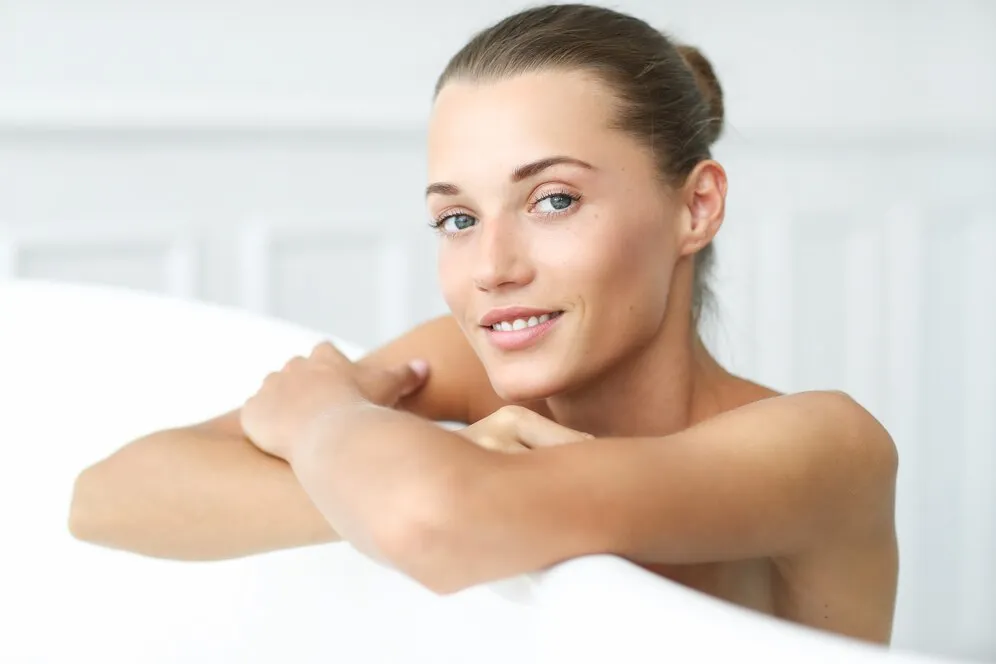
Under eye laser treatment
Under eye laser treatment, also known as laser resurfacing or laser therapy for the periorbital area, is a cosmetic procedure aimed at improving the appearance of the delicate skin around the eyes. This treatment targets various concerns, including dark circles, fine lines, wrinkles, puffiness, and under-eye bags, resulting in a more youthful and refreshed appearance.
Under eye laser treatment typically utilizes fractional laser technology, such as fractional CO2 or erbium YAG lasers. These lasers emit precise beams of light that penetrate the skin’s surface, creating microscopic channels or injuries. This stimulates the body’s natural healing response, promoting collagen production and skin renewal. Over time, this process leads to smoother, firmer, and more even-toned skin around the eyes.
This procedure is typically performed in a dermatologist’s office or medical spa under local anesthesia or topical numbing cream to minimize discomfort. Depending on the specific laser used and the patient’s goals, the treatment may involve multiple sessions spaced several weeks apart.
During the procedure, patients may feel a warm sensation or mild discomfort as the laser is applied to the skin. Afterward, the treated area may appear red, swollen, or slightly irritated, similar to a sunburn. These side effects usually subside within a few days to a week, and patients can resume their normal activities with minimal downtime.


Results from under eye laser treatment are gradual and progressive, with improvements becoming more noticeable over several weeks to months as collagen production increases and the skin continues to regenerate. While individual outcomes vary, many patients experience smoother, brighter, and more rejuvenated under-eye skin, with a reduction in dark circles, wrinkles, and puffiness.
It’s essential to consult with a qualified dermatologist or cosmetic surgeon before undergoing under eye laser treatment to discuss expectations, candidacy, and potential risks. Not everyone is a suitable candidate for laser therapy, and factors such as skin type, medical history, and lifestyle should be considered.
In conclusion, under eye laser treatment offers a non-invasive and effective solution for addressing various cosmetic concerns around the eyes. With advancements in laser technology and proper patient selection, this procedure can help individuals achieve a more youthful and refreshed appearance with minimal downtime and long-lasting results.
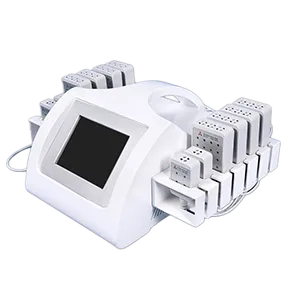
After the treatment, patients may experience temporary redness, swelling, and bruising in the treated areas. These side effects usually resolve within a few days to weeks, and most patients can return to their normal activities within a day or two.
Results from lipo laser treatment are typically gradual and progressive, with optimal results becoming visible over several weeks to months as the body metabolizes the liquefied fat and the skin tightens. While individual outcomes vary, many patients experience significant fat reduction and improved body contouring, with long-lasting results when combined with a healthy lifestyle.
Lipo laser treatment is not a substitute for weight loss or a healthy diet and exercise regimen. It is best suited for individuals who are close to their ideal weight but have localized areas of fat that are resistant to traditional weight loss methods.
As with any cosmetic procedure, it’s essential to consult with a qualified cosmetic surgeon or dermatologist to determine if lipo laser treatment is appropriate for your specific needs and goals. They can provide personalized recommendations and discuss potential risks and benefits.
In summary, lipo laser treatment offers a safe, effective, and minimally invasive option for reducing stubborn fat deposits and sculpting the body’s contours. With advancements in laser technology and proper patient selection, this procedure can help individuals achieve a slimmer, more toned appearance with minimal downtime and long-lasting results.
Lipo laser treatment
Lipo laser treatment, also known as laser lipolysis or laser-assisted liposuction, is a minimally invasive cosmetic procedure designed to target and reduce stubborn pockets of fat. Unlike traditional liposuction, which involves surgical removal of fat cells, lipo laser treatment uses laser energy to liquefy fat cells, making them easier to remove or metabolize by the body.
During lipo laser treatment, low-level laser energy is delivered through fiber-optic cables directly into the targeted areas of fat deposits. This laser energy is absorbed by the adipose tissue, causing the fat cells to release their stored triglycerides and fatty acids. The liquefied fat is then either suctioned out through a small cannula or metabolized and eliminated naturally by the body’s lymphatic system.
Fat Reduction: Lipo laser treatment is effective for reducing localized fat deposits in areas such as the abdomen, thighs, hips, buttocks, arms, and chin. It is particularly useful for individuals who have struggled to lose fat through diet and exercise alone.
Body Contouring: By precisely targeting specific areas of the body, lipo laser treatment can sculpt and contour the silhouette, creating a more toned and proportionate appearance.
Skin Tightening: In addition to fat reduction, lipo laser treatment can stimulate collagen production in the skin, leading to improved skin elasticity and firmness. This helps prevent sagging or looseness in the treated areas, resulting in a smoother and more sculpted contour.
Lipo laser treatment is performed on an outpatient basis under local anesthesia. The procedure typically takes one to two hours, depending on the size and number of areas being treated. Patients may experience minimal discomfort during the procedure, which is generally well-tolerated.

Rosacea laser treatment
Rosacea laser treatment is a specialized procedure aimed at reducing the visible symptoms of rosacea, a chronic inflammatory skin condition that primarily affects the face. This condition is characterized by facial redness, visible blood vessels, bumps, and pimples, often accompanied by a sensation of heat or stinging. While rosacea cannot be cured, laser therapy offers an effective way to manage its symptoms and improve the overall appearance of the skin.
Laser treatment for rosacea typically utilizes devices such as pulsed dye lasers (PDL), intense pulsed light (IPL) therapy, or vascular lasers. These lasers target the blood vessels and inflammation associated with rosacea, effectively reducing redness and minimizing visible blood vessels.
The mechanism of action involves the selective absorption of light energy by the hemoglobin in the blood vessels, causing them to coagulate and shrink. This process reduces the appearance of redness and diminishes the visibility of blood vessels on the skin’s surface. Additionally, laser therapy can stimulate collagen production, leading to improvements in skin texture and overall skin quality.
The procedure is performed in a dermatologist’s office or medical spa under the supervision of a trained professional. Before the treatment, the skin is usually cleansed, and a topical anesthetic may be applied to minimize discomfort. During the procedure, the laser device is gently passed over the affected areas of the face, delivering targeted pulses of light energy.
Patients may experience mild discomfort during the procedure, often described as a sensation of heat or snapping on the skin. However, this discomfort is usually well-tolerated, and the procedure typically takes only a few minutes to complete, depending on the size and severity of the affected area.

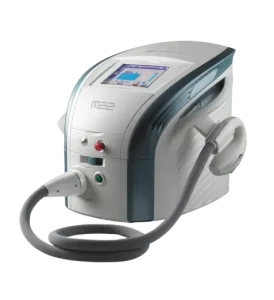
After the treatment, patients may experience temporary redness, swelling, or bruising, similar to a mild sunburn. These side effects usually subside within a few days to a week, and most patients can resume their normal activities immediately after the procedure.
Results from rosacea laser treatment are typically gradual and progressive, with optimal improvement seen over several weeks to months. While individual outcomes may vary, many patients experience a significant reduction in redness and visible blood vessels, leading to a more even complexion and improved skin texture.
Laser therapy is often recommended as part of a comprehensive treatment plan for rosacea, which may also include topical medications, oral antibiotics, and lifestyle modifications. Maintenance treatments may be necessary to sustain the results over time, depending on the severity of the condition and individual response to treatment.
In summary, rosacea laser treatment offers an effective way to manage the symptoms of rosacea and improve the overall appearance of the skin. With its targeted approach and minimal downtime, laser therapy provides patients with a safe and reliable option for achieving clearer, healthier-looking skin.
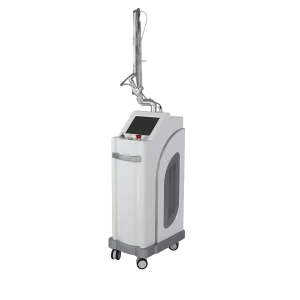
3. Hyperpigmentation: The laser energy targets excess melanin in the skin, leading to a reduction in hyperpigmentation, including sunspots, age spots, and melasma.
4. Skin Tightening: Profractional laser treatment can tighten and firm the skin, improving elasticity and reducing laxity.
After the procedure, patients may experience redness, swelling, and mild discomfort, similar to a sunburn. These side effects typically subside within a few days, and most patients can resume their normal activities within a week. It is essential to follow post-procedure instructions provided by your healthcare provider, including the use of sunscreen and gentle skincare products.
Results from Profractional laser treatment are gradual and progressive, with optimal improvement seen over several months as collagen continues to remodel. Patients often notice smoother, firmer, and more even-toned skin, with a reduction in wrinkles, scars, and pigmentation irregularities.
It is important to consult with a qualified healthcare provider or dermatologist to determine if Profractional laser treatment is suitable for your skin concerns and goals. They can assess your skin condition, discuss treatment options, and develop a personalized treatment plan tailored to your needs.
In summary, Profractional laser treatment offers a safe and effective solution for addressing a wide range of skin concerns, including wrinkles, scars, and pigmentation issues. With its precise and customizable approach, Profractional laser treatment can help patients achieve smoother, firmer, and more youthful-looking skin with minimal downtime.
Profractional laser treatment
Profractional laser treatment is an advanced cosmetic procedure used to address various skin concerns, including wrinkles, scars, uneven texture, and pigmentation issues. This treatment utilizes a fractional laser technology that delivers precise beams of light to targeted areas of the skin, stimulating collagen production and promoting skin renewal.
The Profractional laser works by creating micro-injuries in the skin, known as microthermal zones, while leaving surrounding tissue intact. This fractional approach allows for faster healing and less downtime compared to traditional laser resurfacing treatments. The controlled injury triggers the body’s natural healing process, leading to the formation of new, healthy skin cells and the remodeling of collagen.
The procedure begins with the application of a topical numbing cream to minimize discomfort. The laser is then passed over the skin, delivering pulses of energy to the targeted areas. Patients may experience a sensation of warmth or mild discomfort during the procedure, but this is generally well-tolerated.
Profractional laser treatment can be customized to address specific concerns and skin types. It is effective for:
1. Wrinkles and Fine Lines: By stimulating collagen production, Profractional laser treatment can reduce the appearance of fine lines and wrinkles, particularly around the eyes, mouth, and forehead.
2. Acne Scars: Profractional lasers can help improve the appearance of acne scars by promoting collagen remodeling and smoothing out uneven skin texture.
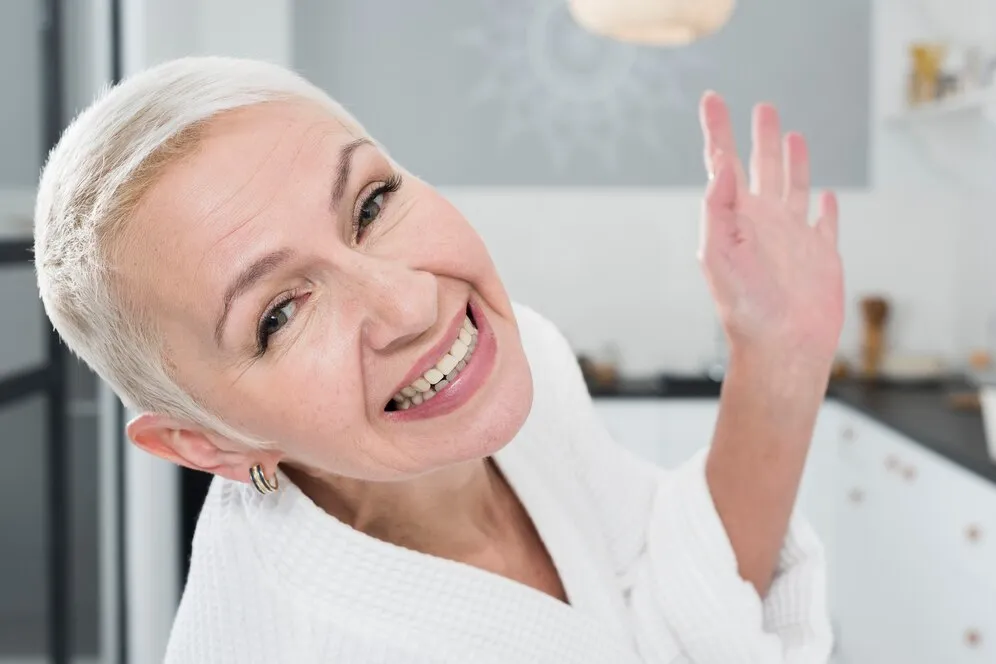
Laser treatment for spider veins
Laser treatment for spider veins, also known as laser vein therapy or laser vein removal, is a non-invasive procedure designed to reduce the appearance of spider veins on the legs, face, or other areas of the body. Spider veins are small, dilated blood vessels that often appear close to the surface of the skin, resembling spider webs or tree branches. While they are typically harmless, many individuals seek treatment to improve the cosmetic appearance of their skin.
The laser treatment for spider veins utilizes a specialized laser device that emits a concentrated beam of light energy. This light energy is absorbed by the hemoglobin in the blood vessels, causing them to coagulate and collapse. Over time, the collapsed veins are gradually absorbed and eliminated by the body, resulting in a reduction in the appearance of spider veins.
The procedure begins with the application of a topical numbing cream to the treatment area to minimize discomfort. The laser is then applied to the skin, targeting the spider veins with precise pulses of light energy. Patients may experience a sensation of warmth or mild discomfort during the procedure, but this is generally well-tolerated.
Laser treatment for spider veins can be performed on an outpatient basis in a dermatologist’s office or medical spa. The duration of the treatment session depends on the size and number of spider veins being treated, but sessions typically last between 15 to 45 minutes.


After the procedure, patients may experience redness, swelling, or bruising in the treated area, similar to a mild sunburn. These side effects usually subside within a few days to weeks, and most patients can resume their normal activities immediately after the procedure.
Results from laser treatment for spider veins are gradual and progressive, with optimal improvement seen over several weeks to months as the body absorbs and eliminates the treated veins. While individual outcomes may vary, many patients experience a significant reduction in the appearance of spider veins, leading to smoother and more even-toned skin.
It is important to note that laser treatment for spider veins may require multiple sessions to achieve the desired results, particularly for larger or more extensive spider veins. The number of sessions needed depends on factors such as the size, depth, and location of the veins, as well as the individual’s response to treatment.
Overall, laser treatment for spider veins offers a safe and effective solution for improving the cosmetic appearance of the skin. With its non-invasive nature and minimal downtime, laser vein therapy provides patients with a convenient option for achieving smoother, more radiant skin.

Laser treatment for wrinkles can be performed on an outpatient basis in a dermatologist’s office or medical spa. The duration of the treatment session depends on the size and number of areas being treated, but sessions typically last between 15 to 60 minutes.
After the procedure, patients may experience redness, swelling, or mild irritation in the treated areas, similar to a sunburn. These side effects usually subside within a few days to weeks, and most patients can resume their normal activities immediately after the procedure.
Results from laser treatment for wrinkles are gradual and progressive, with optimal improvement seen over several weeks to months as collagen continues to remodel and the skin rejuvenates. While individual outcomes may vary, many patients experience a significant reduction in the appearance of fine lines and wrinkles, leading to smoother, firmer, and more youthful-looking skin.
It is important to note that laser treatment for wrinkles may require multiple sessions to achieve the desired results, particularly for deeper wrinkles or more extensive treatment areas. The number of sessions needed depends on factors such as the severity of the wrinkles, the type of laser used, and the individual’s skin type and response to treatment.
In summary, laser treatment for wrinkles offers a safe and effective solution for reducing the signs of aging and achieving smoother, more youthful-looking skin. With its non-invasive nature and minimal downtime, laser therapy provides patients with a convenient option for rejuvenating their appearance and boosting their confidence.
Laser treatment for wrinkles
Laser treatment for wrinkles is a popular and effective cosmetic procedure aimed at reducing the appearance of fine lines and wrinkles on the face, neck, and other areas of the body. This non-invasive treatment utilizes laser technology to stimulate collagen production, improve skin elasticity, and promote skin renewal, resulting in smoother, firmer, and more youthful-looking skin.
The procedure involves the use of a specialized laser device that delivers targeted beams of light energy to the skin’s surface. These lasers can vary in type, including fractional lasers, ablative lasers, and non-ablative lasers, each offering unique benefits and applications for wrinkle reduction.
Fractional lasers, such as fractional CO2 or erbium YAG lasers, create microscopic channels or injuries in the skin, known as microthermal zones. This stimulates the body’s natural healing process, promoting collagen production and skin regeneration. Ablative lasers, on the other hand, remove the outer layers of the skin, triggering the formation of new, smoother skin cells. Non-ablative lasers penetrate the skin’s surface without causing damage, heating the underlying tissues to stimulate collagen production.
Before the procedure, the skin is typically cleansed and a topical numbing cream may be applied to minimize discomfort. During the treatment, the laser is passed over the skin, delivering pulses of light energy to the targeted areas. Patients may experience a sensation of warmth or mild discomfort during the procedure, but this is generally well-tolerated.
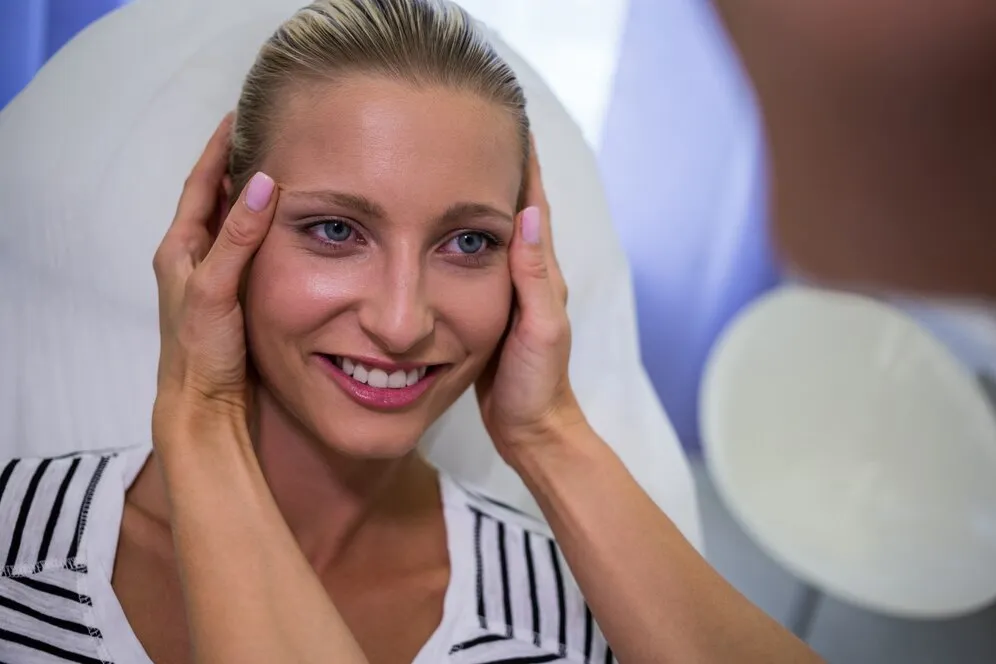
Laser treatment for hyperpigmentation
Laser treatment for hyperpigmentation is a highly effective cosmetic procedure designed to reduce the appearance of dark spots, patches, and uneven skin tone caused by excess melanin production. Hyperpigmentation can be triggered by various factors, including sun exposure, hormonal changes, aging, and skin injuries. Laser therapy offers a targeted approach to address these pigmentary concerns and restore a more even and radiant complexion.
The procedure involves the use of specialized laser devices that emit specific wavelengths of light energy to target and break down excess melanin in the skin. This process, known as selective photothermolysis, heats the pigment cells (melanocytes) responsible for producing melanin, causing them to fragment and disperse. Over time, the body’s natural healing processes remove the fragmented pigment, resulting in a reduction in hyperpigmentation and an improvement in skin tone.
Several types of lasers can be used for treating hyperpigmentation, including fractional lasers, Q-switched lasers, and intense pulsed light (IPL) devices. Each type of laser works differently and may be selected based on factors such as the depth and severity of the pigmentation, the patient’s skin type, and their treatment goals.
Fractional lasers create tiny, controlled injuries in the skin, stimulating collagen production and encouraging the turnover of pigmented cells. Q-switched lasers deliver short bursts of high-energy light to target specific pigment deposits, while IPL devices emit broad-spectrum light to target a range of pigmentation issues.
Before the procedure, the skin is typically cleansed, and a topical numbing cream may be applied to minimize discomfort. During the treatment, the laser is directed at the affected areas of the skin, delivering pulses of light energy. Patients may experience a mild tingling sensation or warmth during the procedure, but this is generally well-tolerated.
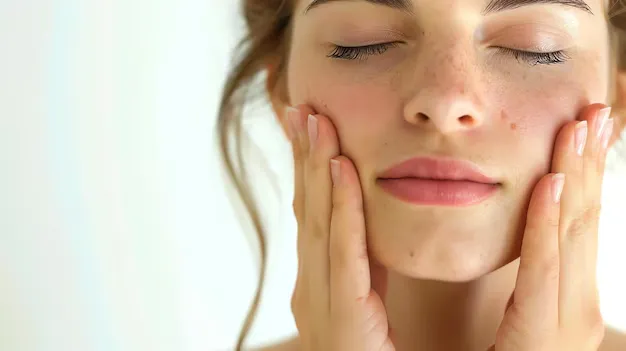

Laser treatment for hyperpigmentation can be performed on various areas of the body, including the face, neck, chest, arms, and hands. The duration of the treatment session depends on the size and number of areas being treated but typically lasts between 15 to 60 minutes.
After the procedure, patients may experience temporary redness, swelling, or mild irritation in the treated areas. These side effects usually subside within a few days, and most patients can resume their normal activities immediately after the procedure. It is essential to protect the treated skin from sun exposure and follow post-treatment care instructions provided by the healthcare provider to optimize results and minimize complications.
Results from laser treatment for hyperpigmentation are gradual and progressive, with optimal improvement seen over several weeks to months as the skin heals and pigmentation fades. While individual outcomes may vary, many patients experience a significant reduction in the appearance of dark spots and a more even complexion, leading to brighter, more radiant skin.
In summary, laser treatment for hyperpigmentation offers a safe and effective solution for addressing uneven skin tone and restoring a more youthful and radiant complexion. With its targeted approach and minimal downtime, laser therapy provides patients with a convenient option for achieving smoother, clearer, and more even-toned skin.

Cellulite laser treatment can be performed on an outpatient basis in a dermatologist’s office or medical spa. The duration of the treatment session depends on the size and number of areas being treated but typically lasts between 30 to 60 minutes.
After the procedure, patients may experience temporary redness, swelling, or mild bruising in the treated areas. These side effects usually subside within a few days, and most patients can resume their normal activities immediately after the procedure. It is essential to follow post-treatment care instructions provided by the healthcare provider to optimize results and minimize complications.
Results from cellulite laser treatment are gradual and progressive, with optimal improvement seen over several weeks to months as the body metabolizes fat cells and the skin heals. While individual outcomes may vary, many patients experience a noticeable reduction in the appearance of cellulite and smoother, firmer skin.
It is important to note that cellulite laser treatment may require multiple sessions to achieve the desired results, particularly for more severe cases of cellulite. The number of sessions needed depends on factors such as the extent of cellulite, the patient’s skin type, and their treatment goals.
In summary, cellulite laser treatment offers a safe and effective solution for reducing the appearance of cellulite and achieving smoother, firmer skin. With its non-invasive nature and minimal downtime, laser therapy provides patients with a convenient option for improving the appearance of cellulite and boosting their confidence.
Cellulite laser treatment
Cellulite laser treatment is a cosmetic procedure aimed at reducing the appearance of cellulite, a common condition characterized by dimpled, lumpy skin, usually found on the thighs, buttocks, and abdomen. Cellulite is caused by a combination of factors, including fat accumulation, connective tissue changes, and poor circulation. Laser therapy offers a non-invasive and effective solution for targeting and improving the appearance of cellulite, resulting in smoother, firmer skin.
The procedure utilizes specialized laser devices that emit targeted wavelengths of light energy to address the underlying causes of cellulite. These lasers work by:
Breaking Down Fat Cells: Some laser devices utilize heat energy to target and break down fat cells beneath the skin’s surface. This process, known as lipolysis, helps to reduce the size of fat deposits and smooth out the appearance of cellulite.
Stimulating Collagen Production: Other laser devices stimulate collagen production in the skin, leading to improved skin elasticity and firmness. By strengthening the connective tissue network, laser therapy can help to reduce the visibility of cellulite dimples and create a smoother skin texture.
Before the procedure, the treatment area is typically cleansed, and a topical numbing cream may be applied to minimize discomfort. During the treatment, the laser is applied to the skin, delivering targeted pulses of light energy. Patients may experience a mild warming sensation or tingling during the procedure, but this is generally well-tolerated.
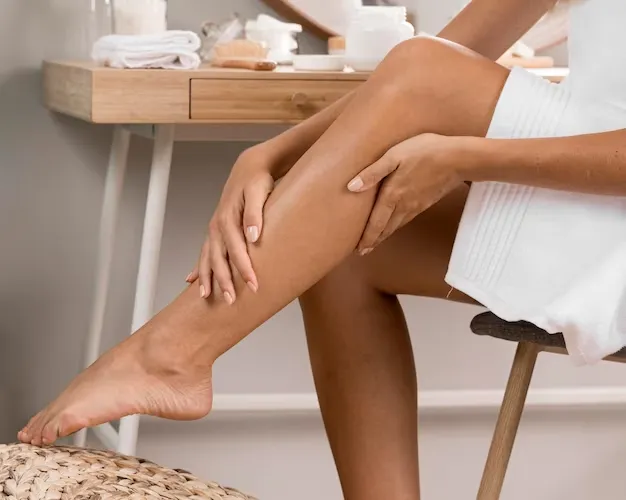
Mona lisa laser treatment
MonaLisa Touch is a non-invasive laser treatment designed to address various gynecological concerns, particularly those related to vaginal health and sexual wellness. This innovative procedure utilizes fractional CO2 laser technology to stimulate collagen production and promote tissue regeneration in the vaginal area, leading to improvements in vaginal dryness, laxity, discomfort, and other symptoms associated with menopause, childbirth, or hormonal changes.
The MonaLisa Touch procedure involves the use of a specialized laser device that delivers controlled pulses of laser energy to the vaginal mucosa. The laser energy penetrates deep into the tissue, triggering a healing response that revitalizes and rejuvenates the vaginal walls. This process promotes the growth of new blood vessels and collagen fibers, resulting in increased hydration, elasticity, and lubrication of the vaginal tissues.
Before the procedure, patients undergo a thorough evaluation by a healthcare provider to assess their symptoms and determine if they are candidates for MonaLisa Touch treatment. The procedure itself is performed in-office and typically takes less than 30 minutes to complete. Patients may experience a mild warming sensation or tingling during the procedure, but discomfort is minimal.
MonaLisa Touch is often recommended for women experiencing symptoms such as vaginal dryness, itching, burning, pain during intercourse, urinary incontinence, or vaginal laxity. These symptoms are commonly associated with menopause, hormonal changes, childbirth, or certain medical conditions.
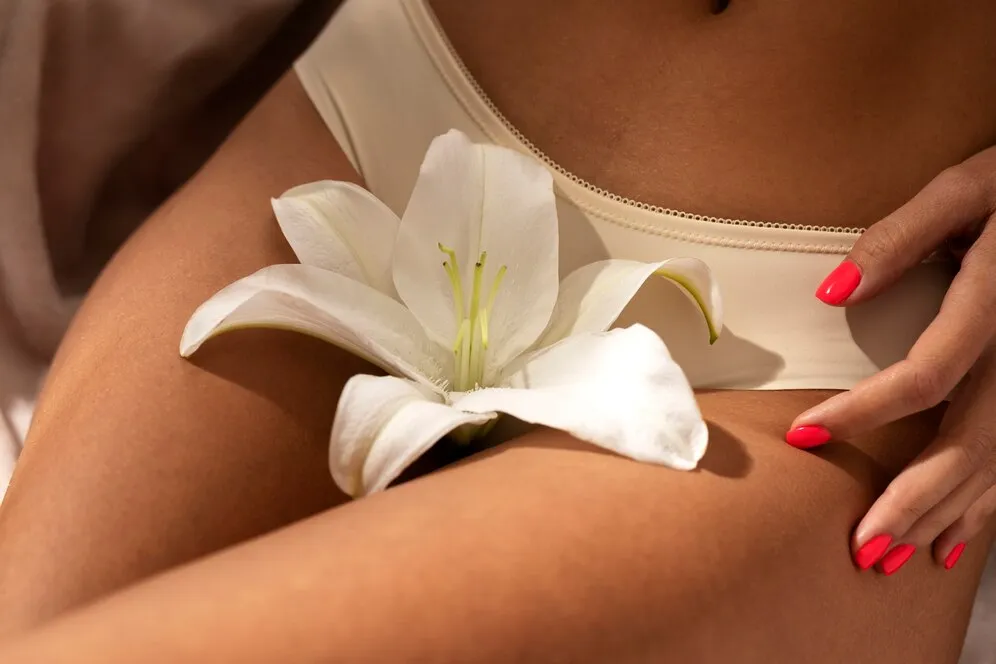
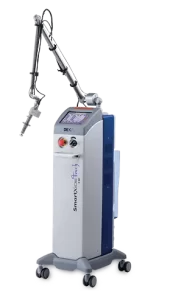
After the procedure, patients may experience mild redness or swelling in the treated area, but these side effects typically subside within a few days. Most patients can resume their normal activities immediately after the procedure, although strenuous exercise and sexual activity may be advised to be avoided for a short period.
Results from MonaLisa Touch treatment are typically noticeable within a few weeks, with optimal improvement seen over several months as collagen production continues and the vaginal tissues continue to heal and regenerate. Many patients report significant improvements in vaginal health, comfort, and sexual satisfaction after undergoing the procedure.
It is important to note that MonaLisa Touch treatment may require multiple sessions to achieve the desired results, particularly for women with more severe symptoms or conditions. The number of sessions needed varies depending on factors such as the patient’s age, overall health, and the severity of their symptoms.
In summary, MonaLisa Touch laser treatment offers a safe and effective solution for improving vaginal health and sexual wellness in women experiencing symptoms related to menopause, childbirth, or hormonal changes. With its non-invasive nature, minimal discomfort, and quick recovery time, MonaLisa Touch provides women with a convenient option for restoring vaginal health and enhancing their quality of life.
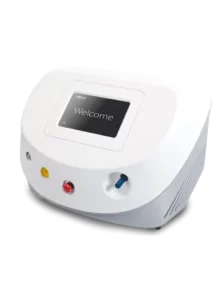
After the procedure, patients may experience some bruising, swelling, and tightness in the treated leg, but these symptoms generally subside within a few weeks. Compression stockings are often prescribed for several days to a few weeks after EVLT to aid in recovery and enhance the effectiveness of the treatment.
The results of laser treatment for varicose veins can be seen within a few weeks, with continued improvement over several months. Most patients report significant relief from symptoms such as pain, swelling, and fatigue in the legs, as well as an improved appearance of the skin where varicose veins were prominent.
While EVLT is highly effective in treating varicose veins and preventing their recurrence, it is not suitable for everyone. The procedure is most effective for patients with large, bulging varicose veins and may not be recommended for those with small spider veins or certain types of vascular disease. A thorough evaluation by a vascular specialist or dermatologist is necessary to determine if laser treatment is appropriate based on the individual’s medical history, the severity of vein disease, and overall health.
In summary, laser treatment for varicose veins offers a safe, effective, and minimally invasive option for eliminating painful and unsightly varicose veins. With its quick recovery time and high success rate, EVLT provides a significant improvement in both the appearance and function of the legs, helping patients return to a more active and comfortable lifestyle.
Laser treatment for varicose veins✔
Laser treatment for varicose veins, known as endovenous laser therapy (EVLT), is a minimally invasive procedure designed to eliminate varicose veins and improve the appearance and health of the legs. Varicose veins are enlarged, twisted veins that typically appear blue or dark purple, often caused by faulty valves within the veins that allow blood to flow backward and pool. EVLT uses laser energy to seal off these veins, diverting blood flow to healthier veins and reducing the bulging and discomfort associated with varicose veins.
The procedure begins with the application of a local anesthetic to the treatment area to minimize discomfort. A small incision is made, and a thin laser fiber is inserted into the varicose vein under ultrasound guidance. The laser emits short bursts of light energy that heat the vein and cause it to collapse and seal shut. Over time, the treated vein is reabsorbed by the body and disappears.
EVLT is typically performed in a doctor’s office or clinic and takes about an hour to complete. The procedure offers several advantages over traditional surgical treatments for varicose veins, such as vein stripping, including less pain, minimal downtime, and fewer complications. Patients can usually walk immediately after the procedure and return to normal activities within a day, although strenuous exercise and heavy lifting should be avoided for a few weeks.

Fractional laser treatment✔
Fractional laser treatment is an advanced skin resurfacing technology designed to improve skin texture, tone, and appearance. This type of laser therapy specifically targets microscopic columns of skin while leaving the surrounding tissue untouched, which promotes rapid healing and natural collagen production. Fractional lasers can be either ablative or non-ablative, with each type catering to different skin concerns and recovery times.
Ablative fractional lasers vaporize tissue at a very precise depth, creating controlled damage to promote the body’s natural healing process. This method is particularly effective for addressing more significant skin damage, such as deep wrinkles, scars, and sun damage. The treatment results in a smoother, tighter skin surface but requires a longer recovery period compared to non-ablative treatments.
Non-ablative fractional lasers, on the other hand, do not destroy the skin tissue. Instead, they heat the underlying skin layers to stimulate collagen production and cellular renewal. This type is less aggressive than ablative lasers and is typically used for milder skin concerns such as fine lines, early signs of aging, and minor pigmentation issues. Non-ablative treatments offer the benefit of reduced downtime, allowing patients to return to their daily activities more quickly.
The procedure for fractional laser treatment involves applying a topical anesthetic to the treatment area to minimize discomfort. During the session, the laser device is moved across the skin, emitting pulses of light that penetrate the tissue to the desired depth. Patients may feel a sensation of heat and slight discomfort during the treatment, which is generally well-tolerated due to the numbing cream.

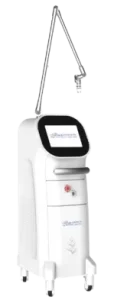
The treatment session usually lasts between 15 to 45 minutes, depending on the size of the area being treated and the specific issues addressed. After the procedure, patients can expect some degree of redness, swelling, and a sensation similar to sunburn. These symptoms typically subside within a few days for non-ablative treatments and up to two weeks for ablative treatments.
Post-treatment care is crucial for ensuring the best possible results and minimizing potential side effects. Patients are advised to keep the treated area clean, moisturized, and protected from sun exposure. Broad-spectrum sunscreen is essential to protect the new skin and prevent further damage.
Results from fractional laser treatment are not immediate and will develop over several months as the skin heals and new collagen is formed. Most patients notice a gradual improvement in skin texture and tone, with optimal results visible after a series of treatments spaced several weeks apart. The number of treatments needed varies based on the individual’s skin condition, desired outcomes, and the type of fractional laser used.
Fractional laser treatment is suitable for most skin types, but it is especially effective for those with fair to medium skin tones. It is important for patients to consult with a dermatologist or cosmetic skin specialist to determine if fractional laser treatment is appropriate for their skin concerns and to develop a personalized treatment plan.
In summary, fractional laser treatment offers a highly effective solution for improving skin texture, tone, and overall appearance. With options for both mild and more intensive treatment, it provides tailored solutions for a wide range of skin concerns, allowing individuals to achieve smoother, clearer, and more youthful-looking skin with minimal downtime.
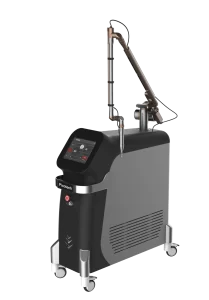
After the procedure, the treated areas may appear darker and may be red and swollen for a few days. This is a normal reaction as the skin begins to heal. The dark spots will gradually lighten over several weeks. Most patients require multiple treatment sessions to achieve their desired results, and these sessions are usually spaced several weeks apart to allow the skin to heal properly.
Post-treatment care is critical to ensure the effectiveness of the procedure and to minimize the risk of side effects. Patients are advised to avoid direct sunlight and use a broad-spectrum sunscreen with high SPF to protect the treated areas. Keeping the skin moisturized and avoiding any harsh skin care products is also recommended during the healing process.
Laser treatment for dark spots is highly effective, but it is not a permanent solution. New dark spots may develop, especially if the underlying causes, such as sun exposure or hormonal imbalances, are not addressed. Therefore, in addition to laser treatments, patients may need to make lifestyle changes or use topical treatments to prevent new spots from forming.
In summary, laser treatment for dark spots on the face offers a promising solution for those looking to reduce hyperpigmentation and achieve a more even skin tone. With proper selection of laser technology and careful post-treatment care, patients can expect significant improvements in their skin’s appearance, enhancing their overall confidence and satisfaction with their look.
Laser treatment for dark spots on face✔
Laser treatment for dark spots on the face is a precise and effective method for reducing hyperpigmentation, such as age spots, sunspots, and melasma. These dark spots are typically caused by an overproduction of melanin in certain areas of the skin, often due to factors like sun exposure, aging, hormonal changes, or skin injury. Laser therapy targets these melanin-rich areas, helping to fade the spots and improve overall skin tone.
The procedure utilizes various types of lasers, with the most common being intense pulsed light (IPL) and Q-switched lasers. These lasers emit light at specific wavelengths that are absorbed by the dark pigments in the skin. The light energy is converted into heat, which breaks down the pigment into smaller particles. These particles are then either absorbed by the body or come to the surface and flake off, leading to a reduction in the appearance of dark spots.
Before undergoing laser treatment, a dermatologist or skin care specialist will evaluate the patient’s skin type and the nature of the hyperpigmentation to determine the most suitable laser option. This evaluation is crucial as different skin types and colors respond differently to laser treatment, and using the wrong type of laser could potentially worsen hyperpigmentation.
The treatment session typically lasts between 15 to 30 minutes, depending on the size and number of dark spots being treated. During the procedure, patients may experience a mild snapping sensation on their skin, which is generally well-tolerated thanks to cooling devices or topical anesthetic creams that are used to minimize discomfort.

Laser treatment for scars✔
Laser treatment for scars is a modern dermatological procedure designed to reduce the appearance of scars and improve the texture of the skin. Scars can result from acne, injuries, surgeries, or burns, and they vary widely in shape, size, and severity. Laser therapy provides a non-invasive solution to diminish these scars by promoting the regeneration of healthy skin cells and increasing collagen production.
The procedure uses concentrated beams of light to target scar tissue. The two main types of lasers used for scar treatment are ablative and non-ablative lasers. Ablative lasers work by vaporizing the outer layers of scarred skin, encouraging the growth of smoother, new skin underneath. This type of laser is typically used for more pronounced scars such as deep acne scars or thickened hypertrophic scars. Non-ablative lasers, on the other hand, do not remove any skin layers; instead, they stimulate collagen production and healthy skin cell growth from within by heating the underlying skin tissues. This method is often used for less severe scars and promotes faster recovery than ablative treatments.
Fractional lasers, a subtype of both ablative and non-ablative lasers, target a fraction of the skin at a time, creating microscopic columns of coagulation in the skin that are surrounded by untreated skin. This technique helps reduce recovery time and risk of complications, as it allows the surrounding healthy tissue to aid in the healing process of the treated areas.
Before the procedure, the treating specialist will evaluate the type and severity of the scars to determine the most appropriate laser system. The area to be treated is then cleansed, and a topical anesthetic is applied to minimize discomfort. Protective eyewear is provided to the patient to shield the eyes from the intense laser light.


During the treatment, patients might feel a sensation similar to the snapping of a rubber band against the skin, along with warmth. Each session typically lasts from 30 minutes to an hour, depending on the size and number of scars being treated. The number of sessions required varies based on the scar’s characteristics and the patient’s healing response, with treatments spaced several weeks to months apart.
After the procedure, patients can expect some redness, swelling, and sensitivity in the treated area, akin to a sunburn. These side effects usually subside within a few days to a week. Crusting or peeling may occur as the new skin forms, particularly with ablative treatments. It is crucial to follow post-treatment care instructions, such as keeping the treated area clean, moisturized, and protected from sun exposure with a high-SPF sunscreen. This care is essential to prevent complications and ensure optimal results.
The effectiveness of laser scar treatment varies; however, many patients see significant improvements in the appearance and texture of their scars, resulting in smoother, more consistent skin. While laser treatment may not completely remove scars, it can significantly diminish their visibility and relieve associated discomfort.
In summary, laser treatment for scars offers a promising option for those seeking to minimize the appearance of various types of scars. With advancements in laser technology and individualized treatment plans, this procedure can significantly enhance the skin’s appearance and patients’ confidence in their skin.
Melasma laser treatment✔
Melasma laser treatment is a targeted approach to reducing the appearance of melasma, a common skin condition characterized by brown or grayish patches typically appearing on the face. These patches often occur on the forehead, cheeks, upper lip, and chin and are more common in women, particularly during pregnancy or among those who use oral contraceptives or hormone replacement therapy. Melasma is also more prevalent in individuals with darker skin types due to higher melanin levels. Laser treatment for melasma offers a promising solution by targeting the excess melanin that forms these dark patches.
The procedure utilizes specific types of lasers that are carefully selected based on their ability to break down melanin without causing damage to the surrounding skin. The most commonly used lasers for melasma include fractional lasers, Q-switched lasers, and intense pulsed light (IPL) devices. Each type of laser has unique properties and is chosen based on the individual’s skin type, the severity of the melasma, and previous responses to treatment.
Fractional lasers work by delivering energy in an array of high precision microbeams, which create columns of coagulation within the skin without affecting the surrounding tissue. This method helps in reducing the melasma patches and stimulates the skin’s natural healing process, promoting new collagen formation and leading to skin rejuvenation.
Q-switched lasers emit high-energy pulses of light that specifically target melanin, effectively breaking up the pigment in the skin. This type of laser is often used for treating tattoo pigments and is adapted for melasma to selectively target and fragment the melanin particles causing the discoloration.

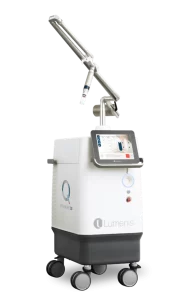
Intense Pulsed Light (IPL) therapy uses a broad spectrum of light rather than a single wavelength. This light targets the melanin and is absorbed by the pigmented areas, which helps in fading the dark patches. IPL is particularly useful for treating melasma that covers larger areas of the face.
The treatment process typically involves applying a cooling gel to the skin and using a handheld device to direct the laser or light pulses to the affected areas. The duration of each session can vary but generally lasts about 30 minutes. Patients might experience a mild stinging sensation during the treatment, similar to the snapping of a rubber band against the skin. Cooling devices are often used in conjunction with the laser to minimize discomfort.
After the procedure, it is common to experience mild redness and swelling, which usually subsides within a few hours to days. Patients are advised to avoid sun exposure and use broad-spectrum sunscreen to protect the skin and prevent the melasma from worsening. Depending on the type of laser used and the severity of the melasma, multiple treatment sessions may be necessary to achieve optimal results.
Results from melasma laser treatment can be significant; however, melasma is a chronic condition and may recur, especially if triggered by hormonal changes or sun exposure. Maintenance treatments, along with a proper skincare routine and sun protection, are crucial to managing the condition over the long term.
In summary, laser treatment for melasma offers a targeted and effective method for reducing the appearance of dark patches caused by this condition. With the appropriate laser technology and customized treatment plan, patients can achieve a more even skin tone and improved overall complexion.

Recovery from lip laser treatment is relatively quick, with most individuals able to resume their normal activities immediately after the session. However, it is crucial to follow the post-treatment care instructions provided by the dermatologist or cosmetic surgeon. This includes keeping the lips moisturized, avoiding direct sunlight, and using a high-SPF lip balm to protect the area during the healing process.
Results from lip laser treatment are not immediate but develop over time as the skin heals and collagen levels increase. Patients typically notice a gradual improvement in the appearance of their lips, with the final results visible within several weeks. For best results, multiple sessions may be recommended, especially for more pronounced lip lines or severe discoloration.
It is important for anyone considering lip laser treatment to consult with a qualified professional who can assess their specific needs and recommend the most appropriate laser type and treatment plan. This consultation is crucial to ensure the safety and effectiveness of the treatment and to set realistic expectations for the outcome.
In summary, lip laser treatment offers a safe and effective solution for enhancing the appearance of the lips. By stimulating collagen production and rejuvenating the skin around the lips, this procedure helps to create fuller, smoother, and more youthful-looking lips. With minimal downtime and lasting results, lip laser treatment is an increasingly popular option for cosmetic enhancement of the lips.
Lip laser treatment✔
Lip laser treatment is an innovative cosmetic procedure designed to enhance the appearance of the lips by addressing issues such as discoloration, fine lines, and overall texture. This non-invasive method uses focused laser energy to rejuvenate the lip area, making it an attractive option for those seeking fuller, more defined, and youthful-looking lips without undergoing surgical interventions.
The treatment typically involves the use of fractional lasers, which are especially effective for delicate areas like the lips. Fractional lasers work by creating tiny micro-injuries in the skin, which stimulate the body’s natural healing process and boost collagen production. This increased collagen helps to plump the lips naturally, reduces the appearance of vertical lip lines, and improves the overall texture and tone of the lip skin.
Before the procedure begins, a topical numbing cream is usually applied to the lips to minimize discomfort. The specific type of laser is then carefully selected based on the patient’s skin type and specific concerns. For example, ablative lasers are more intense and are used to remove thin layers of skin for a more dramatic rejuvenation, while non-ablative lasers heat up the underlying skin tissue without damaging the surface, promoting a more subtle improvement with quicker recovery times.
During the treatment, patients may feel a warm sensation or a series of quick snaps as the laser pulses are applied. The entire session typically lasts between 30 to 60 minutes, depending on the extent of the treatment required. Post-procedure, patients can expect some mild redness, swelling, and sensitivity in the treated area. These side effects generally subside within a few days.

Vascular laser treatment✔
Vascular laser treatment is a specialized medical procedure designed to address various vascular conditions such as spider veins, varicose veins, rosacea, port wine stains, and cherry angiomas. This treatment utilizes specific wavelengths of laser light to target and destroy abnormal blood vessels without harming the surrounding tissue. The precision and efficacy of vascular laser treatment make it a preferred choice for patients seeking a non-invasive solution to their vascular concerns.
The principle behind vascular laser treatment is selective photothermolysis. The laser emits a wavelength that is preferentially absorbed by the hemoglobin in the blood vessels. This absorption raises the temperature of the blood vessels, causing them to coagulate and subsequently be reabsorbed by the body. Over time, this process significantly reduces the visibility of the treated vessels.
There are several types of lasers used for vascular treatments, including the pulsed dye laser, Nd laser, and intense pulsed light (IPL) devices. The choice of laser depends on the specific vascular condition being treated, the depth of the vessels, the area of the body, and the patient’s skin type.
Pulsed dye lasers are commonly used for treating superficial vascular lesions such as spider veins and port wine stains. They deliver an intense but gentle burst of light into selectively targeted areas of the skin. The light is absorbed by the blood vessels in the dermis, causing them to heat up and disintegrate.
Nd lasers offer deeper penetration and can be used for larger or deeper veins. They are particularly effective for treating leg veins and deeper vascular lesions. The longer wavelength of the Nd laser allows it to bypass the outer layers of the skin and focus on the vessels deeper in the dermis.

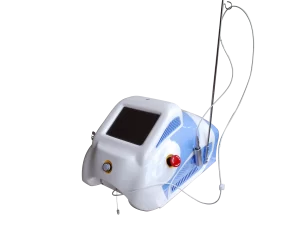
IPL devices, while not lasers, use a broad spectrum of light to treat vascular lesions. They are especially effective for skin conditions like rosacea, where multiple small vessels are involved.
The procedure for vascular laser treatment is typically quick and can be done in an outpatient setting. Depending on the size and location of the vascular lesions, the treatment might take anywhere from a few minutes to an hour. Patients usually experience minimal discomfort during the procedure, often described as a quick snap or pinch, and cooling techniques or topical anesthetic creams may be used to minimize pain.
Post-treatment, the area may appear red and swollen, and there might be some bruising, which usually resolves within a week or two. The treated vessels generally fade over several weeks, and multiple treatments spaced several weeks apart may be necessary to achieve optimal results.
Recovery is usually swift, with most patients able to return to normal activities immediately, although strenuous activity and exposure to sunlight should be avoided for a period following the treatment.
Vascular laser treatment is highly effective, with many patients experiencing substantial improvement in the appearance of their vascular lesions. The outcomes can be long-lasting, providing both cosmetic and symptomatic relief. However, it is crucial for potential candidates to consult with a dermatologist or vascular specialist to assess their suitability for laser treatment and discuss potential risks and benefits.
In conclusion, vascular laser treatment offers a safe, effective, and minimally invasive option for managing various vascular conditions. With the appropriate laser technology and skilled application, patients can achieve significant improvements in the appearance of vascular lesions and an enhanced quality of life.
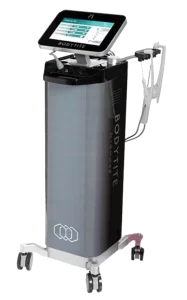
One of the key advantages of Morpheus8 is its ability to target deeper layers of the skin without damaging the outermost layer. This approach reduces recovery time and lowers the risk of complications, such as hyperpigmentation, which can be a concern with other resurfacing techniques, especially in darker skin tones.
The procedure typically takes between 30 minutes to an hour, depending on the size of the area being treated. After the treatment, patients can expect some degree of redness and swelling, similar to what might be seen with a mild sunburn. These symptoms generally subside within a few days. Most patients are able to return to their regular activities within one to two days, with little to no downtime required.
Results from Morpheus8 can be seen within a few days, with improvements continuing for up to three months as the skin produces new collagen and elastin. For optimal results, a series of treatments, typically between one to three sessions spaced several weeks apart, may be recommended based on the individual’s skin condition and aesthetic goals.
Overall, Morpheus8 is a versatile and effective treatment for those looking to reduce signs of aging, improve skin texture, and achieve a more rejuvenated appearance. With its deep fractional remodeling capabilities, Morpheus8 offers a powerful solution for enhancing skin health and appearance without the need for more invasive surgical procedures.
Morpheus laser treatment✔
Morpheus8 is a cutting-edge laser treatment that combines microneedling with radiofrequency energy to achieve deep fractional remodeling of the skin. This innovative procedure is designed to improve skin texture, tighten loose skin, and reduce the appearance of wrinkles, scars, and other skin irregularities. Morpheus8 is particularly effective because it penetrates deeper into the skin than traditional microneedling, reaching the subdermal layers to promote a more significant production of collagen and elastin.
The Morpheus8 device uses a matrix of micro pins to deliver radiofrequency energy deep into the dermis, creating micro lesions that initiate the natural healing process of the body. This dual action, both mechanical from the microneedles and thermal from the radiofrequency energy, stimulates the underlying layers of the dermis to remodel and rebuild, improving skin firmness and appearance.
The treatment process begins with the application of a topical anesthetic to the target area to ensure comfort during the procedure. The Morpheus8 handpiece is then applied to the skin, and the micro pins penetrate the surface at a predetermined depth, depending on the treatment goals and the area being treated. The device emits radiofrequency energy as the needles penetrate, which heats the deeper layers of the skin.
This heating action helps to tighten existing collagen fibers and stimulate the production of new collagen and elastin, essential components for maintaining youthful skin structure and elasticity. The treatment is effective for facial areas, including the jowls, cheeks, and forehead, as well as other parts of the body that may require skin rejuvenation, such as the abdomen or thighs.

Keratosis pilaris laser treatment✔
Keratosis pilaris, commonly known as “chicken skin,” is a skin condition characterized by rough patches and small, acne-like bumps, usually on the arms, thighs, cheeks, and buttocks. These bumps are often white or red and do not hurt or itch. The condition results from the buildup of keratin, a hard protein that protects the skin from harmful substances and infection. While keratosis pilaris is generally harmless, many seek treatments for cosmetic reasons, as it can be unsightly or cause discomfort in terms of skin texture.
Laser treatment has emerged as a promising solution for those looking to alleviate the symptoms of keratosis pilaris. This method targets the affected areas with concentrated light beams to reduce inflammation and redness, and in some cases, to smooth out the skin’s surface. The most common types of lasers used in the treatment of keratosis pilaris are the pulsed dye laser (PDL) and fractional CO2 lasers.
Pulsed Dye Laser (PDL): This type of laser is specifically effective for reducing redness. The PDL targets the blood vessels in the upper dermis without harming the surrounding tissue. It emits a concentrated beam of light that is absorbed by the blood vessels, causing them to shrink, which can diminish the red appearance associated with keratosis pilaris.
Fractional CO2 Laser: This laser treatment is more intensive and is used to address the skin’s texture. The fractional CO2 laser creates microthermal zones in the skin, which remove columns of skin cells and stimulate the natural healing process. This process encourages the production of new collagen and can help to smooth out the bumps caused by keratosis pilaris.

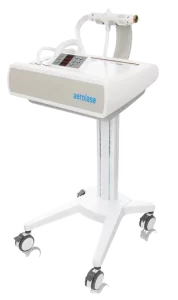
The laser treatment process typically involves multiple sessions, with each session lasting anywhere from 15 to 30 minutes, depending on the size of the area being treated. Before the procedure, a topical anesthetic may be applied to minimize discomfort. During the treatment, patients might feel a sensation similar to a rubber band snapping against the skin.
After treatment, patients may experience temporary redness, swelling, and a sandpaper-like texture on the treated area, which usually subsides within a few days. It is important for patients to moisturize the treated area and use gentle skincare products to enhance the healing process.
While laser treatment can significantly reduce the visibility of keratosis pilaris and improve skin texture, it may not completely cure the condition. Keratosis pilaris is known to be stubborn and may recur, requiring additional treatments or ongoing maintenance sessions. Moreover, the effectiveness of laser treatment can vary depending on the individual’s skin type, the severity of the condition, and the specific laser technology used.
Patients considering laser treatment for keratosis pilaris should consult with a dermatologist who can evaluate their skin condition and recommend the most appropriate treatment plan. This consultation will also provide an opportunity to discuss potential risks and benefits of laser therapy.
In conclusion, laser treatment offers a viable option for reducing the symptoms of keratosis pilaris, particularly for those looking for alternatives to topical treatments. By targeting the underlying issues of inflammation and skin texture, laser therapy can help patients achieve smoother and less irritated skin.
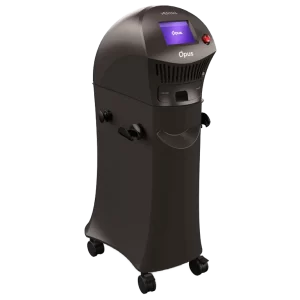
Patients may experience a sensation of heat and slight tingling during the procedure, but these sensations are generally well-tolerated due to the cooling mechanisms of the device and the use of numbing cream. After the treatment, there is minimal downtime, and patients can expect some redness and sensitivity, similar to a mild sunburn. These side effects typically resolve within a few days.
One of the advantages of Opus laser treatment is its customizability. The device settings can be adjusted to suit different skin types and concerns, making it suitable for a broad range of patients. Whether targeting superficial blemishes or deeper structural issues, the Opus laser can be tailored to achieve specific cosmetic goals.
Results from Opus laser treatment are visible within a few days as the skin begins to heal, with continued improvements over several months as new collagen and elastin are formed. For optimal results, a series of treatments spaced a few weeks apart may be recommended, depending on the individual’s skin condition and desired outcomes.
Opus laser treatment is particularly effective for those looking for a non-surgical solution to rejuvenate and refresh their appearance. It offers a balanced approach to skin treatment by addressing both surface-level imperfections and deeper skin layers, which results in a more comprehensive improvement in skin quality and a youthful, revitalized appearance.
Overall, Opus laser treatment provides a safe, effective, and minimally invasive option for enhancing skin texture and firmness. With its advanced combination of fractional plasma and radiofrequency energy, it offers a promising solution for individuals seeking to diminish the signs of aging and improve their skin’s overall health and appearance.
Opus laser treatment✔
Opus laser treatment is an innovative and versatile cosmetic procedure that employs plasma technology combined with radiofrequency to enhance skin rejuvenation. This treatment is designed to address a wide range of skin concerns, including fine lines, wrinkles, acne scars, uneven texture, and laxity. It stands out for its ability to deliver results with minimal downtime and discomfort, making it a popular choice among those seeking effective anti-aging and skin refining treatments.
The Opus system utilizes a device that combines fractional plasma technology with radiofrequency energy. The fractional plasma technology creates micro-injuries on the skin’s surface, which stimulates the body’s natural healing processes, including collagen and elastin production. At the same time, the radiofrequency energy penetrates deeper into the dermal layers, heating the tissue to tighten the skin and improve its underlying structure.
This dual-action approach allows Opus laser treatment to effectively remodel both the surface and the deeper layers of the skin. The fractional plasma significantly improves the skin’s texture and tone by addressing superficial issues like fine lines, scars, and enlarged pores. Meanwhile, the radiofrequency component works to tighten the skin and reduce sagging by enhancing collagen density and promoting tissue contraction.
The procedure is typically performed in a dermatologist’s office or a medical spa. Before the treatment, a topical anesthetic is applied to the target area to minimize any discomfort. During the session, the Opus device is passed over the skin, delivering controlled plasma and radiofrequency energy. Each treatment session generally lasts about 15 to 30 minutes, depending on the size of the area being treated.

Laser treatment for broken capillaries✔
Laser treatment for broken capillaries is a targeted cosmetic procedure that addresses and eliminates the visible small, thread-like red or purple blood vessels that can appear on the face or other parts of the body. These broken capillaries, also known as telangiectasias or spider veins, are often caused by factors such as sun exposure, aging, genetics, or skin conditions like rosacea. Laser therapy provides an effective solution by using focused light energy to heat and destroy these vessels without damaging the surrounding skin.
The technology behind this treatment involves lasers that emit wavelengths of light specifically absorbed by the hemoglobin in the blood. When the light energy is absorbed, it converts to heat, causing the blood within the capillaries to coagulate and the walls of the capillaries to collapse. Over time, the destroyed blood vessels are reabsorbed by the body, fading from view and significantly reducing their appearance on the skin’s surface.
Common types of lasers used for treating broken capillaries include the pulsed dye laser (PDL) and the neodymium-doped yttrium aluminum garnet (Nd) laser. PDL is particularly effective for superficial blood vessels, while Nd lasers can reach deeper vessels due to their longer wavelengths.
Before the procedure, a consultation with a dermatologist or laser specialist is necessary to assess the affected areas and determine the most appropriate laser based on the severity and depth of the capillaries. During the treatment, protective eyewear is worn by both the patient and practitioner. A cooling gel might be applied to the skin, and the laser device is passed over the affected areas.

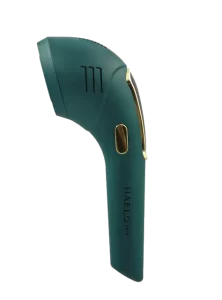
Patients typically experience a sensation of a quick snap with a slight warmth or tingling during the procedure, which is generally well-tolerated. The treatment duration can vary but usually lasts between 15 to 30 minutes, depending on the extent of the area being treated.
After the procedure, there might be minor redness and swelling in the treated area, resembling a mild sunburn. These side effects usually subside within a few hours to a couple of days. Patients are advised to avoid strenuous activities and direct sun exposure immediately following the treatment to help the healing process. Additionally, applying sunscreen and using gentle skin care products can help protect and soothe the treated skin.
The effectiveness of laser treatment for broken capillaries is typically visible within a few weeks, as the body continues to reabsorb the treated blood vessels. Most patients experience a significant reduction in the appearance of broken capillaries after just one or two sessions. However, multiple treatments may be necessary for optimal results, especially for more extensive or deeper vessels.
Laser treatment for broken capillaries is highly regarded for its precision and effectiveness, offering a quick solution with minimal downtime. It is an attractive option for individuals seeking to improve their skin’s appearance by eliminating unsightly broken capillaries and achieving a clearer, more uniform complexion. This procedure not only enhances the aesthetic appeal but also boosts the confidence of those affected by this common cosmetic issue.
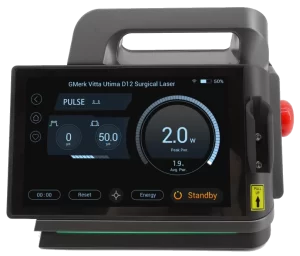
The benefits of EVLT are significant. It effectively alleviates the symptoms associated with varicose veins, such as aching, swelling, skin irritation, and discoloration. Additionally, it addresses the cosmetic concern that varicose veins often present. The success rate of EVLT is high, with about 94% to 98% of treated veins successfully closed off. The risk of recurrence is much lower compared to traditional surgical methods.
Patients typically notice an improvement in symptoms soon after the procedure, with continued improvements as the treated vein becomes less visible over the next few weeks to months. While some patients might need more than one treatment session, depending on the extent and number of varicose veins, many achieve significant relief with just one session.
Post-treatment care involves very few restrictions, though it’s recommended to avoid strenuous exercise and high-impact activities for a couple of weeks. Regular walking is encouraged to promote good circulation. It is also crucial to follow up with ultrasound imaging to ensure the treated vein remains closed and to check for any potential complications.
In conclusion, endovenous laser treatment is a safe, effective, and minimally invasive option for treating varicose veins. It provides a quick recovery, minimal scarring, and significant relief from the discomfort and appearance of varicose veins. Patients considering EVLT should consult with a vascular specialist to determine if they are a good candidate for the procedure and to discuss any potential risks and benefits.
Endovenous laser treatment✔
Endovenous laser treatment (EVLT) is a minimally invasive laser procedure used to treat varicose veins. Varicose veins are enlarged, swollen veins that often appear twisted and bulging, typically on the legs. They can cause discomfort, pain, and sometimes more serious health issues. EVLT offers a clinically effective alternative to traditional surgical methods like vein stripping, providing relief with less downtime and minimal discomfort.
EVLT works by using laser energy to close off the affected veins, thus redirecting blood flow to healthier veins. The process begins with an ultrasound examination of the leg to map out the vein. Under local anesthesia, a thin laser fiber is inserted through a small incision into the varicose vein. The laser is then activated as the fiber is slowly withdrawn, which delivers precise laser energy that heats and collapses the vein wall, sealing the vein shut.
The entire procedure is typically performed in a doctor’s office or clinic and takes about 45 minutes to an hour. Due to the local anesthesia and the minimally invasive nature of the treatment, patients can walk immediately after the procedure and most return to normal activities the same day.
After the treatment, patients might experience mild bruising, swelling, or discomfort in the treated leg, which usually subsides within a few weeks. Compression stockings are often prescribed to be worn for one to two weeks after the procedure to aid in recovery and improve circulation.

Chronic venous insufficiency endovenous laser treatment✔
Chronic venous insufficiency (CVI) is a condition where the veins in the legs cannot adequately return blood to the heart, often leading to symptoms such as swelling, pain, skin changes, and ulcers. Endovenous laser treatment (EVLT) has become a highly effective method to manage CVI by targeting the dysfunctional veins that contribute to the condition.
EVLT for chronic venous insufficiency involves the use of laser energy to close off the affected veins, improving overall blood flow and alleviating the symptoms associated with CVI. This minimally invasive procedure is performed under local anesthesia and utilizes ultrasound technology to guide a laser fiber through a small incision into the problematic vein. The laser heats the vein from within, causing it to collapse and seal shut. This process redirects the blood to healthier veins, thereby reducing venous pressure and improving circulation.
The procedure typically takes about 45 minutes to an hour per leg, depending on the number and length of veins being treated. Patients can usually walk immediately after the procedure and often return to their normal activities the same day, with some advised to avoid strenuous exercise for a short period.
Post-procedure, patients may experience mild bruising and discomfort in the treated areas, but these symptoms generally subside within a few days. Compression stockings are commonly prescribed for a period after the treatment to aid in healing and support improved circulation. Regular follow-up appointments are crucial to monitor the success of the treatment and manage any complications.

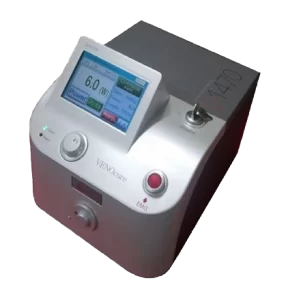
The benefits of EVLT for CVI are significant. It provides relief from the symptoms of venous insufficiency such as leg swelling, pain, and fatigue. It also helps prevent progression to more severe complications, including venous ulcers. Most patients notice an improvement in symptoms soon after the procedure, with continued improvements over several months as the body absorbs the closed veins.
EVLT has proven to be a safer and less invasive alternative to traditional surgical options such as vein stripping. The procedure has a high success rate, with studies showing a closure rate of the treated veins of 94% to 98%. It also carries a lower risk of complications and requires less recovery time, making it a preferable choice for many patients.
While EVLT is highly effective in treating CVI, it is not suitable for everyone. Patients with severe peripheral arterial disease, deep vein thrombosis, or certain other medical conditions may not be candidates for the procedure. A thorough evaluation by a vascular specialist is necessary to determine if EVLT is an appropriate treatment option.
In summary, endovenous laser treatment offers a minimally invasive solution for managing chronic venous insufficiency, providing significant relief from its symptoms and preventing further complications. With minimal downtime and a high success rate, EVLT represents a modern approach to treating vein diseases, allowing patients to enjoy a quicker return to normal activities and an improved quality of life.
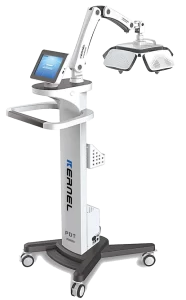
Patients often choose LLLT as a hair loss solution due to its non-invasive nature, absence of serious side effects, and ease of use compared to more traditional hair loss treatments such as topical medications or hair transplant surgery. Additionally, LLLT can be used in conjunction with other treatments to potentially enhance overall results.
Clinical results vary by individual, but many users report a decrease in hair loss, an increase in hair density, and noticeable improvements in hair thickness and health after several months of consistent use. It is important to note that LLLT is generally more effective at stopping or slowing the progression of hair loss rather than reversing it entirely. Patients with recent hair loss and those with small areas of thinning tend to respond best to the treatment.
However, not everyone is an ideal candidate for laser hair loss treatment. It tends to be more effective for individuals in the early stages of hair thinning who have active but weakened hair follicles. Those with longstanding, extensive baldness may see less significant results, as the hair follicles may be too atrophied to reactivate.
For those considering laser treatment for hair loss, it is crucial to consult with a dermatologist or hair restoration specialist who can provide an accurate diagnosis for the type of hair loss and recommend whether LLLT is an appropriate treatment option. This consultation will also offer an opportunity to discuss expectations, potential results, and whether combining LLLT with other treatments might be beneficial.
In summary, laser treatment for hair loss provides a viable option for many individuals looking to combat hair thinning and loss. It offers a safe, non-invasive, and convenient method to potentially boost hair growth and improve scalp health, making it an appealing choice for those not suited to or interested in more invasive hair restoration methods.
Laser treatment for hair loss✔
Laser treatment for hair loss, commonly known as low-level laser therapy (LLLT), is a non-invasive option increasingly used to promote hair growth in individuals experiencing thinning hair or baldness. This treatment employs laser devices that emit coherent light at a wavelength that stimulates hair follicles, encouraging growth and reducing hair loss.
LLLT works by utilizing diodes that emit red or near-infrared light. This light is believed to stimulate cellular activity within the hair follicles, potentially reversing the miniaturization of follicles (a common characteristic of androgenetic alopecia) and helping to create a healthier environment for hair growth. The exact mechanism is thought to involve the stimulation of epidermal stem cells in the hair follicle and shifting the follicles into the anagen, or growth, phase.
The treatment is typically delivered through devices such as handheld laser combs, overhead panels, or caps fitted with laser diodes. These devices are designed for ease of use and can be applied either in a clinical setting or at home. Laser caps and combs, for instance, are popular for their convenience, allowing patients to undergo treatment without frequent visits to a healthcare provider.
A standard session with these devices usually lasts between 15 to 30 minutes and is recommended to be used multiple times per week. Clinical studies suggest that consistent and prolonged use is necessary to maintain and achieve visible results. The safety profile of LLLT devices is high, with very few side effects reported. The most common complaint, if any, is temporary scalp irritation.

Laser treatment for hair removal✔
Laser treatment for hair removal is a popular cosmetic procedure that uses concentrated light to remove unwanted hair from various parts of the body. This method is highly effective for long-term hair reduction and is suitable for a variety of skin and hair types. The technology behind laser hair removal involves targeting the melanin (pigment) in the hair follicles with laser beams, which absorb the light and convert it into heat. This heat damages the hair follicle, inhibiting future hair growth without harming the surrounding skin.
The process is typically performed using one of several types of lasers, including the Alexandrite laser, Diode laser, Nd laser, and Intense Pulsed Light (IPL) systems, each suited to different skin and hair types. The Alexandrite laser is ideal for light to olive complexions, while the Diode laser is effective for light to medium skin tones. The Nd laser can be used on all skin types, including darker skin, and IPL devices are generally less powerful but can be effective on a range of skin and hair colors when used appropriately.
Before undergoing laser hair removal, patients are advised to avoid plucking, waxing, and electrolysis for six weeks prior to treatment because the laser targets the hairs’ roots, which are temporarily removed by waxing or plucking. Patients should also avoid sun exposure for six weeks before and after treatment, as it can make laser hair removal less effective and increase the risk of complications after treatment.

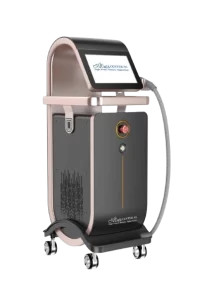
The treatment itself involves trimming the hair to a few millimeters above the skin surface before adjusting the laser equipment according to the color, thickness, and location of the hair being treated as well as the patient’s skin color. During the procedure, a hand-held laser instrument is pressed against the skin, depending on the type of laser, a cooling device on the tip of the instrument or a cool gel might be used to protect the skin and reduce the risk of side effects.
When the laser is activated, the beam passes through the skin to the hair follicles. The intense heat from the laser beam damages the hair follicles, which inhibits hair growth. The sensation during the laser treatment is often described as a snapping of a rubber band against the skin. A topical local anesthetic may be applied to the area to reduce discomfort.
Post-treatment, patients may notice redness and swelling for the first few hours. Cool compresses and moisturizers may help. Over the next month, the treated hair will fall out. It’s important to wear sunscreen during this period to help prevent temporary changes in the color of the treated skin.
Typically, several treatment sessions are required to provide an extended hair-free period. Maintenance treatments might be needed as well. Results vary significantly and are more effective in people with high contrast between their hair and skin colors.
Laser hair removal is highly effective, with most patients experiencing significant hair reduction after three to seven sessions. It is also important to note that while laser hair removal effectively slows hair growth, it doesn’t guarantee permanent hair removal. Periodic maintenance treatments may be needed to keep the area free of hair.
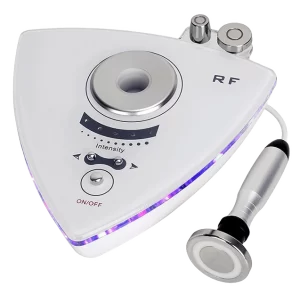
The device is then moved across the target area, delivering short pulses of light or radiofrequency. The sensation can feel like a warm pinch or intense warmth, which is generally well-tolerated, though some devices feature built-in cooling systems to help minimize discomfort.
Sessions usually last from 30 minutes to an hour, depending on the size of the area being treated. Most patients require multiple sessions to achieve optimal results, generally spaced several weeks apart. Since the treatment is non-invasive, there is little to no downtime involved, and patients can return to their normal activities immediately, although some might experience mild redness or swelling for a few hours post-treatment.
Post-procedure care involves minimal maintenance, although patients are advised to keep their skin hydrated and to use sunscreen to protect against UV damage, which can degrade collagen and counteract the benefits of the treatment.
Results from skin tightening laser treatments are gradual and cumulative. Initial tightening can often be seen immediately after the first session, but more significant improvements will become apparent after multiple treatments as new collagen forms. The effects can last for several years, depending on the individual’s skin condition and aging process, although some patients might choose to have annual touch-up sessions to maintain their results.
In conclusion, skin tightening laser treatment offers an effective solution for those looking to reduce signs of aging and improve skin elasticity without surgery. It is a safe and relatively painless option that can provide lasting improvements in skin tightness and youthfulness with appropriate care and maintenance.
Skin tightening laser treatment✔
Skin tightening laser treatment is a non-invasive cosmetic procedure that aims to firm and tighten loose skin without the need for surgical intervention. This technology works by stimulating collagen production in the deeper layers of the skin, enhancing skin elasticity, and reducing the appearance of wrinkles and sagging. The treatment is commonly used on the face, neck, abdomen, and arms, providing a more youthful appearance through a series of outpatient sessions.
The principle behind laser skin tightening is the application of thermal energy to the collagen fibers deep in the skin, causing them to contract and thereby tighten. Over time, the heat also stimulates the natural healing processes of the body, which includes new collagen production and the regeneration of skin cells. Several types of lasers are used for this purpose, including fractional lasers, infrared lasers, and radiofrequency devices. Each has its unique method of delivering heat to the skin but all aim to achieve the same goal of enhancing skin firmness and texture.
One popular type of laser used for skin tightening is the fractional laser. It creates microscopic wounds within the targeted areas of the skin that selectively damage old collagen and promote new collagen synthesis without harming the skin’s surface. Another method involves using infrared lasers that penetrate deeper into the skin to heat the collagen fibers directly, making them contract and tighten immediately.
Radiofrequency treatments, while not laser-based, often fall under the same category because they also target collagen in the skin using energy waves. These treatments heat the deeper layers of the skin to promote collagen and elastin production, leading to tighter, smoother skin over time.
The procedure typically starts with a consultation to assess the condition of the skin and determine the most appropriate treatment plan. During the treatment, a cooling gel is usually applied to the skin, and patients might be given eye protection.

Vein laser treatment✔
Vein laser treatment is a non-invasive medical procedure designed to eliminate or diminish the appearance of unsightly veins, such as spider veins and varicose veins, which commonly appear on the legs and face. This treatment utilizes advanced laser technology to deliver precise and controlled bursts of light energy directly into the affected veins, causing them to heat up, collapse, and eventually be absorbed by the body.
The process specifically targets the pigment in the blood without damaging surrounding tissues. As the laser emits a focused beam of light, it passes through the skin and is absorbed by the blood within the vein. The heat generated from the laser coagulates the blood inside the vein, which leads to the vessel’s collapse. Over time, the collapsed vein is reabsorbed by the body and fades from view, leaving the skin surface smooth and clear.
There are several types of lasers used for vein treatment, but the most common include the Nd laser and the pulsed dye laser. These lasers are chosen for their ability to target blood vessels effectively and safely, minimizing the risk of damage to the surrounding skin.
Before the procedure, a detailed examination is conducted, often using ultrasound imaging to map out the vein structure and identify the specific veins for treatment. During the procedure, protective eyewear is worn to shield the patient’s eyes from the intense light. A cooling gel may also be applied to the skin to protect it and help minimize any discomfort.
Patients undergoing vein laser treatment may feel a tingling or snapping sensation as the laser pulses are applied, but this discomfort is typically mild. The duration of the procedure depends on the size and number of veins being treated but generally lasts between 15 to 30 minutes.

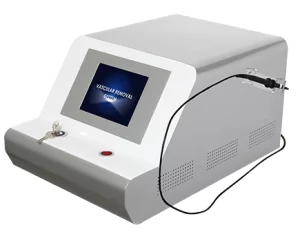
After the treatment, patients can immediately resume normal activities, although strenuous exercise and high heat exposure, like hot baths or saunas, should be avoided for a few days. Side effects are minimal but may include temporary redness, swelling, and bruising at the treatment site. These symptoms usually resolve within a few days. It is crucial to follow post-treatment instructions, such as wearing compression stockings if advised and protecting the treated area from sun exposure.
Results from vein laser treatment are not immediate. It typically takes several weeks to months for the treated veins to fade completely. In some cases, multiple treatments may be necessary to achieve optimal results, especially for larger or more stubborn veins.
Vein laser treatment is highly effective for small to medium-sized spider veins and can also be used for larger varicose veins, though additional or alternative treatments such as sclerotherapy might be recommended in conjunction with laser therapy for larger veins. The success rate is high, and many patients experience significant improvement in both the appearance and discomfort of treated veins.
In summary, vein laser treatment offers a safe, effective, and minimally invasive option for removing unwanted spider and varicose veins. With its precision and minimal downtime, this procedure is a popular choice for those looking to improve cosmetic concerns associated with visible veins, providing long-lasting results and improved skin appearance.
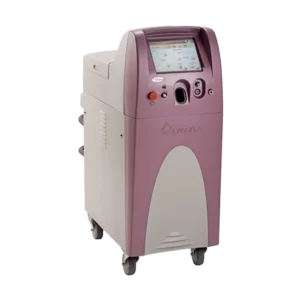
Post-treatment, the treated area may appear red and swollen, and there may be some bruising, which typically resolves within a few days to two weeks. The skin may also feel tender in the treated area, but this is temporary. Patients are advised to avoid sun exposure and apply a broad-spectrum sunscreen to protect the treated area from UV rays, which can worsen the pigmentation of the treated lesions.
The effectiveness of PDL treatment is highly regarded, with many patients seeing significant improvement in the appearance of their vascular lesions after just a few sessions. Some conditions, like port wine stains, may require multiple treatments to achieve optimal results, while others, such as small spider veins, may disappear after one or two treatments.
PDL treatments are generally spaced several weeks apart to allow the skin to heal completely between sessions. The number of treatments needed varies depending on the condition and its severity, the patient’s skin type, and the desired outcome.
In summary, PDL laser treatment is a precise, effective, and safe method for treating a variety of skin conditions, particularly those involving blood vessels. Its ability to selectively target and destroy vascular lesions while minimizing damage to surrounding tissues makes it a preferred choice for patients and dermatologists alike. With minimal downtime and discomfort, PDL offers a convenient solution for improving skin appearance and treating dermatological issues with high patient satisfaction.
Pdl laser treatment✔
Pulsed Dye Laser (PDL) treatment is a specialized dermatological procedure that uses a concentrated beam of light to target and treat various skin conditions characterized by vascular abnormalities, such as rosacea, port wine stains, hemangiomas, and spider veins, as well as non-vascular conditions like warts and scars. This type of laser emits an intense burst of light at a wavelength of 595 nanometers, which is preferentially absorbed by the oxyhemoglobin in the blood vessels, making it particularly effective in treating issues related to blood vessels.
The mechanism of PDL treatment involves delivering a specific wavelength of light that penetrates the skin and is absorbed by the blood. The energy from the laser is converted into heat, which damages the targeted blood vessel while sparing the surrounding tissue. The heat causes the blood within the vessel to coagulate, leading to the destruction of the vessel wall and the eventual fading of the vascular lesion.
Before the procedure, a cooling gel is typically applied to the treatment area to minimize discomfort and protect the skin’s surface. Additionally, local anesthesia may be used to further reduce any pain during the treatment. The PDL device is equipped with a dynamic cooling device that sprays a cooling burst of cryogen milliseconds before the laser pulse, enhancing patient comfort and protecting the skin.
During the treatment, patients often feel a quick snap, like a rubber band hitting the skin, with each laser pulse. The duration of the procedure depends on the size and nature of the area being treated but generally lasts from a few minutes to about half an hour.

Laser treatment for age spots✔
Laser treatment for age spots is a highly effective and increasingly popular cosmetic procedure designed to reduce the appearance of age spots, also known as liver spots or solar lentigines. These spots typically appear as small, darkened patches on the skin and are most commonly found on areas frequently exposed to the sun, such as the face, hands, shoulders, and arms. Age spots are caused by an overproduction of melanin, the pigment that gives skin its color, often due to years of sun exposure or natural aging.
The procedure involves the use of lasers that emit concentrated light energy targeted specifically at the melanin within the age spots. This light energy is absorbed by the pigment and converted into heat, which then destroys the pigment cells. Over time, the treated spots fade, resulting in a more even skin tone.
Several types of lasers can be used for this treatment, with the most common being the intense pulsed light (IPL) laser, Q-switched Nd laser, and fractional lasers. Each type of laser has distinct advantages and is chosen based on the individual’s skin type, the color and depth of the age spots, and the desired results:
Intense Pulsed Light (IPL): Not a traditional laser, IPL uses a broad spectrum of light that can be more precisely filtered to target melanin, making it effective for treating age spots on lighter skin tones. It helps to disperse pigment irregularities and rejuvenate the skin.
Q-switched Nd Laser: This laser is highly effective at targeting deeper or darker pigmentations due to its specific wavelength. It delivers energy in short, intense bursts that shatter the pigment without harming surrounding tissue.
Fractional Lasers: These lasers treat only a fraction of the skin at a time, making them less invasive. They are particularly effective at promoting overall skin rejuvenation while also treating pigmented lesions.


Before the procedure, a dermatologist will typically evaluate the patient’s skin and discuss the most appropriate laser option. During the session, protective eye gear is worn by both the patient and practitioner. A cooling gel may be applied to the skin, and the laser device is passed over the targeted spots. The sensation can feel like a rubber band snapping against the skin, which is generally well-tolerated.
Each treatment session usually takes about 20 to 30 minutes, depending on the number and size of the age spots being treated. Patients can expect mild discomfort during the procedure and minimal downtime afterward. Post-treatment, the skin may appear red and feel slightly swollen for a few days. The age spots themselves may darken initially, then gradually flake off over the following weeks.
To achieve the best results, multiple sessions are often necessary, typically spaced four to six weeks apart. The exact number of treatments varies depending on the severity of the spots and the patient’s response to the laser.
Aftercare involves minimal sun exposure, applying sunscreen regularly, and possibly using moisturizers or other skin care products recommended by the dermatologist. This care is crucial to protect the skin and optimize the healing process.
In summary, laser treatment for age spots offers a safe and effective way to diminish the appearance of hyperpigmentation and enhance the overall aesthetic of the skin. With advanced laser technology, patients can achieve clearer, younger-looking skin with minimal discomfort and downtime.
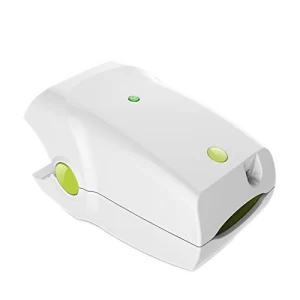
The effectiveness of laser treatment for nail fungus can vary. Many patients see improvement after one treatment, but typically, several sessions are needed to fully eradicate the fungus. Treatments are usually spaced several weeks apart to allow the nail to grow and to assess the effectiveness of the procedure on killing the fungus.
Post-treatment, there is no downtime, and patients can resume normal activities immediately. The success of the treatment is gradually observed as the nail grows out clear, which can take several months depending on the rate of nail growth. Patients are encouraged to follow preventive measures to avoid reinfection, such as keeping their feet dry and clean, wearing breathable footwear, and using antifungal sprays or powders.
It is important for patients considering laser treatment for nail fungus to have realistic expectations. While the laser treatment is effective in many cases, it does not guarantee a cure, and recurrence is possible, especially if preventive steps are not followed. A thorough consultation with a dermatologist or podiatrist experienced in laser treatments can provide a more accurate assessment of the potential outcomes based on the individual’s specific condition.
In summary, laser treatment for nail fungus offers a promising solution for those struggling with onychomycosis. It provides a safer and often more effective alternative to traditional treatments, with the ability to directly target and eliminate the fungus without significant side effects or downtime.
Laser treatment for nail fungus✔
Laser treatment for nail fungus, also known as onychomycosis, is an innovative and effective method for eliminating fungal infections in the nails. This condition is commonly characterized by thickened, brittle, and discolored nails, often difficult to treat with traditional topical and oral medications due to the hard, nonporous nature of the nail. Laser therapy provides a non-invasive alternative that targets the fungus directly beneath the nail plate without damaging the nail or surrounding skin.
The principle behind laser treatment for nail fungus involves the use of specific wavelengths of light that penetrate the nail and reach the fungus residing underneath. These lasers produce heat that selectively destroys the fungal organisms while sparing the surrounding tissues. The most commonly used lasers for this purpose include the Nd laser and the diode laser. These devices are chosen for their ability to reach the depth required to effectively target and heat the fungal cells.
During the procedure, the laser is applied directly to the infected nails. Patients typically do not need any type of anesthesia, as the process causes minimal discomfort. Some individuals might feel a warming sensation or a slight pinprick as the laser pulses are applied. Each session generally lasts about 30 to 45 minutes, depending on the number of nails affected and the severity of the infection.
One of the significant advantages of laser treatment is its safety profile. Unlike oral antifungal medications, which can cause side effects like liver damage or skin rashes, laser treatment has few associated risks and no systemic side effects. The procedure is safe for almost all patients, including those who may not be candidates for oral medication due to pre-existing health conditions.

Excimer laser treatment✔
Excimer laser treatment is a specialized medical procedure that uses a form of ultraviolet laser to treat various skin conditions, particularly psoriasis, vitiligo, and eczema. This type of laser treatment is distinctive because it uses a specific wavelength of ultraviolet light (308 nm), which is particularly effective at targeting and altering the disease process without harming the surrounding healthy skin.
The excimer laser produces a concentrated beam of UVB light, which directly targets only the affected areas of the skin. In conditions like psoriasis, this UVB light helps to reduce inflammation and slow down the production of skin cells that occurs too rapidly in psoriatic patients. For vitiligo, the UVB light can stimulate melanocytes, the cells responsible for skin pigment, potentially leading to repigmentation of the white patches typical of this condition.
Treatment sessions with an excimer laser are quick and typically last only a few minutes. During the procedure, the laser is directed at the specific patches of skin needing treatment. Most patients experience little to no discomfort during these sessions, often describing the sensation as a brief, warm pulse against the skin. Because the laser precisely targets only diseased tissue, it minimizes exposure to healthy skin, reducing the risk of side effects commonly associated with broader UVB or PUVA (psoralen + UVA) therapy options.
Patients undergoing excimer laser treatment usually require several sessions, often two to three times per week, over the course of several weeks. The exact number of treatments varies depending on the severity and extent of the skin condition, as well as the patient’s response to therapy. Improvements can often be seen after just a few sessions, but more persistent or extensive areas of disease may need longer to respond.

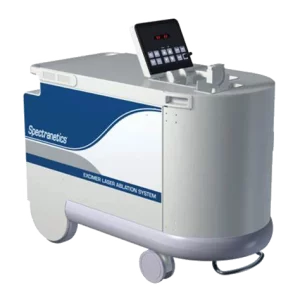
One of the key benefits of excimer laser treatment is its safety and efficacy, particularly for treating difficult or stubborn areas such as the scalp, knees, or elbows. It is also beneficial for targeting small areas of vitiligo and can be used as a spot treatment for eczema.
After the treatment, patients may notice mild redness or irritation in the treated areas. This is typically temporary and subsides on its own. The lack of systemic side effects is a significant advantage of excimer laser treatments compared to systemic medications, which can have more extensive side effects.
Patients are advised to avoid sun exposure on the treated areas and use sunscreen when outdoors to protect the skin and enhance the effectiveness of the treatment. Following the care instructions provided by the healthcare provider is crucial for achieving the best results and minimizing potential side effects.
In summary, excimer laser treatment offers a precise, effective, and safe therapeutic option for managing and treating skin conditions like psoriasis, vitiligo, and eczema. It allows targeted therapy with minimal exposure to unaffected skin, providing significant improvements with fewer sessions and reduced side effects compared to traditional phototherapy methods.
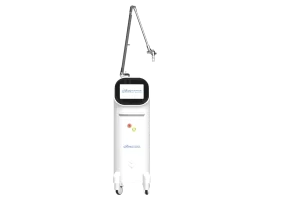
Each treatment session typically lasts about 30 minutes. While improvements can be seen after a single session, multiple treatments are often recommended for optimal results, usually spaced several weeks apart. The procedure is non-invasive with minimal downtime, making it an attractive option for those who are looking for a quick and effective solution to refresh their skin.
Post-treatment, there is usually no significant downtime, though some might experience minor redness and tingling for a few hours. The skin often appears brighter and feels smoother immediately after the treatment. Patients are advised to avoid direct sunlight and use sunscreen to protect the treated skin.
The benefits of carbon laser treatment are manifold. It effectively reduces oily skin and the appearance of pores, improves skin texture, and results in a brighter complexion. It can also make the skin appear firmer and more even-toned. This treatment is particularly beneficial for individuals with oily skin, blackheads, enlarged pores, dull skin, and acne on the face or body.
In summary, carbon laser treatment offers a convenient and effective way to improve the complexion without the downtime associated with more invasive procedures. Its ability to cleanse, rejuvenate, and promote a healthy radiant appearance makes it a favored choice for routine skincare and preparation for special occasions.
Carbon laser treatment✔
Carbon laser treatment, also known as the carbon laser peel or “Hollywood peel,” is an advanced skin rejuvenation procedure that combines the efficacy of a special carbon lotion with the power of a laser. This treatment is favored for its ability to provide a quick facial rejuvenation, minimize pores, reduce the appearance of fine lines and wrinkles, and improve skin texture. It is particularly popular among celebrities and those seeking a fast way to brighten their complexion before big events.
The procedure involves applying a layer of liquid carbon to the face, which penetrates deep into the pores. The carbon acts as a target for the laser, which is passed over the area subsequently. The laser light is highly attracted to the carbon particles. When the laser hits the carbon, it blasts it away, taking dead skin cells, contaminants, and oil with it.
This treatment utilizes a Q-switched Nd laser, which is a type of laser known for its versatility and safety in various skin treatments. The laser energy is absorbed by the carbon paste, resulting in a controlled injury to the very outer layer of skin. This not only helps in exfoliating the skin but also in reducing acne-causing bacteria and shrinking sebaceous glands, which are responsible for oil production.
The process of carbon laser treatment starts with a thorough cleansing of the face. Then, a thin layer of carbon lotion is applied and allowed to dry. The laser is then used to heat and cause an implosion of carbon particles. The laser’s settings are adjusted depending on the specific skin concerns and the intensity required. As the laser passes over the skin, patients may experience a slight tingling and warmth, which is generally well-tolerated.
